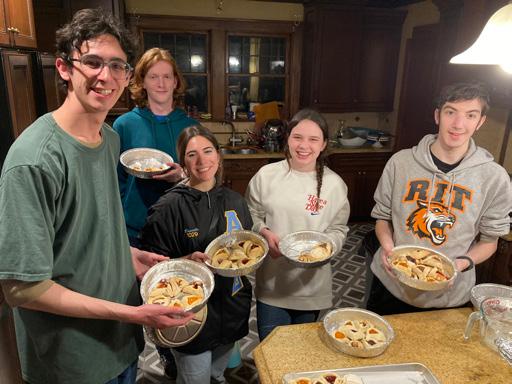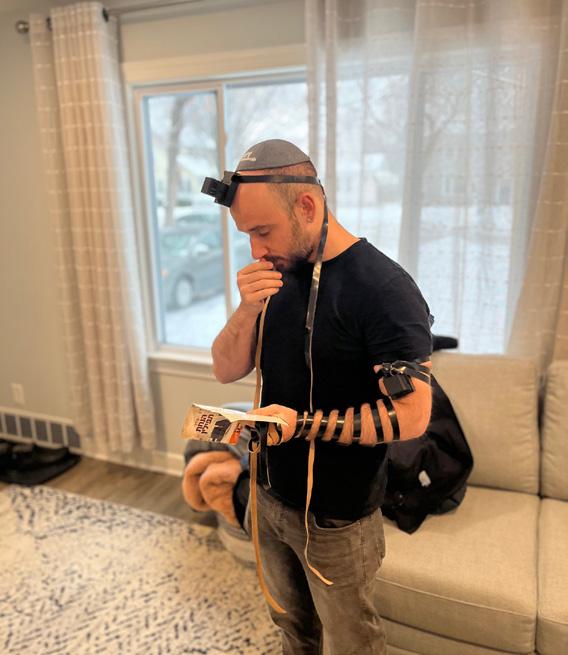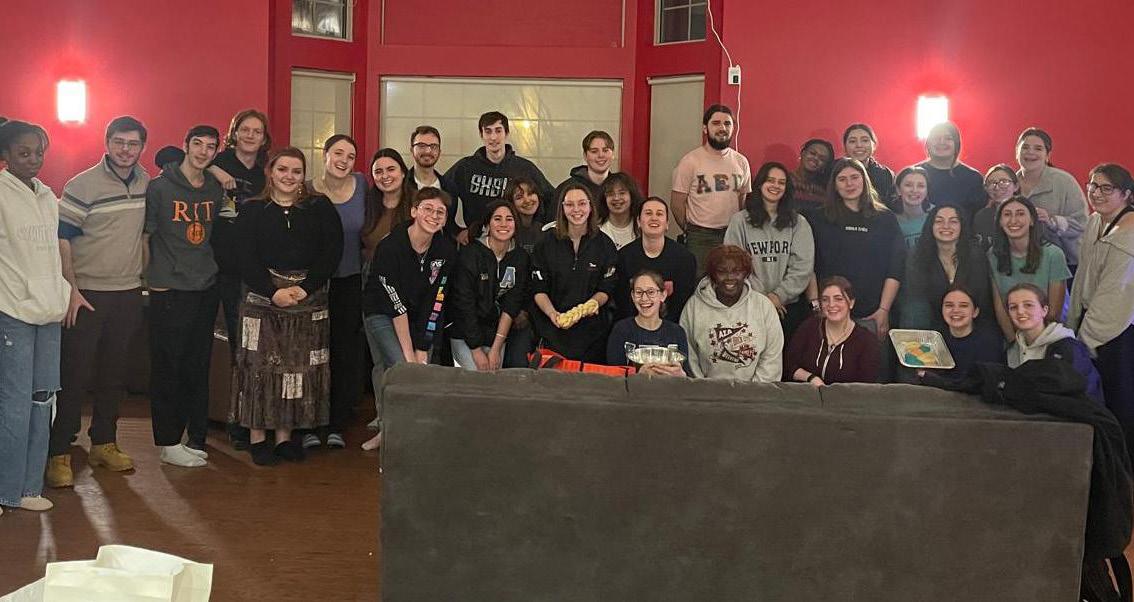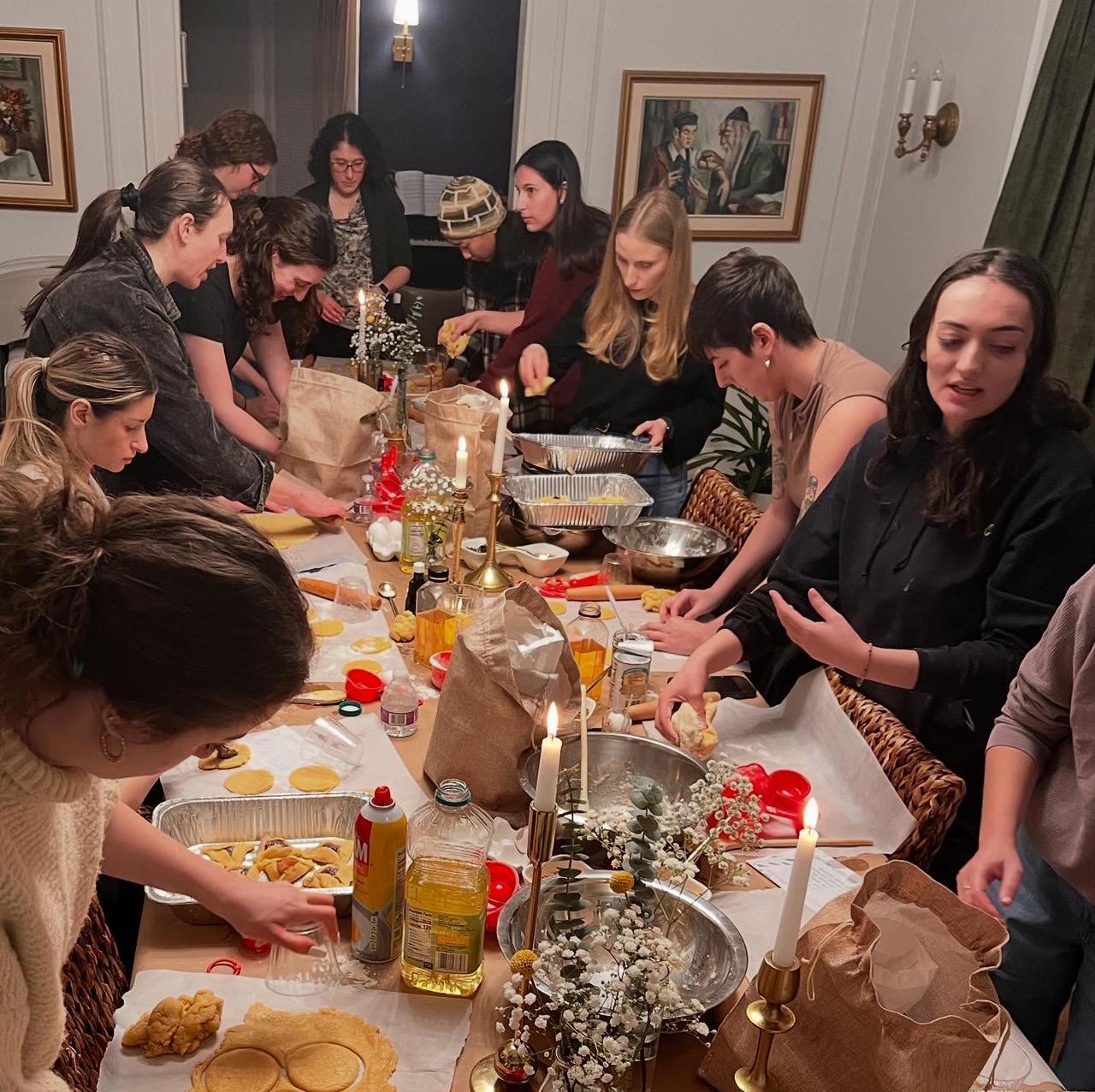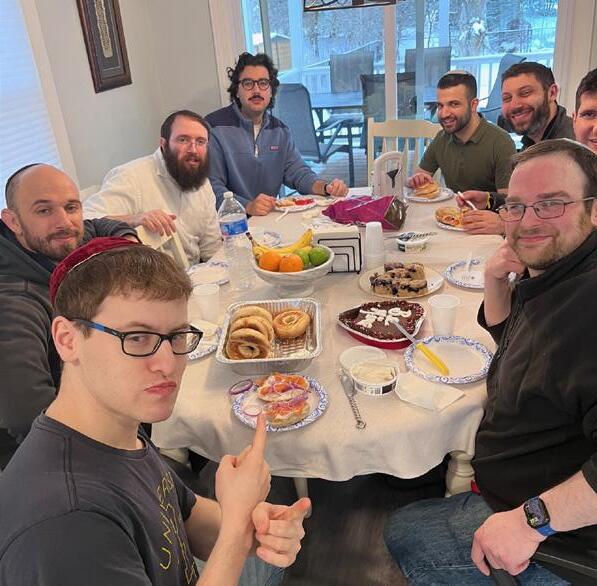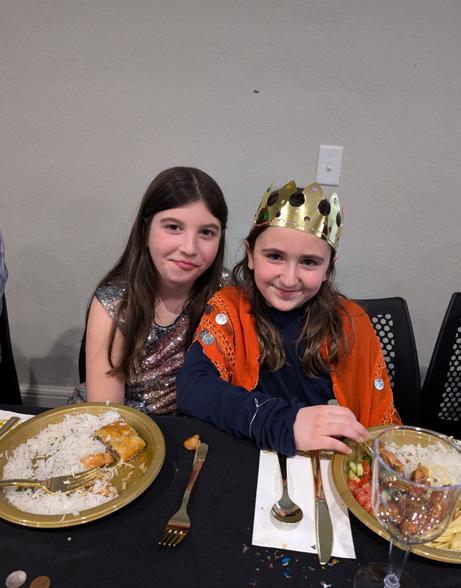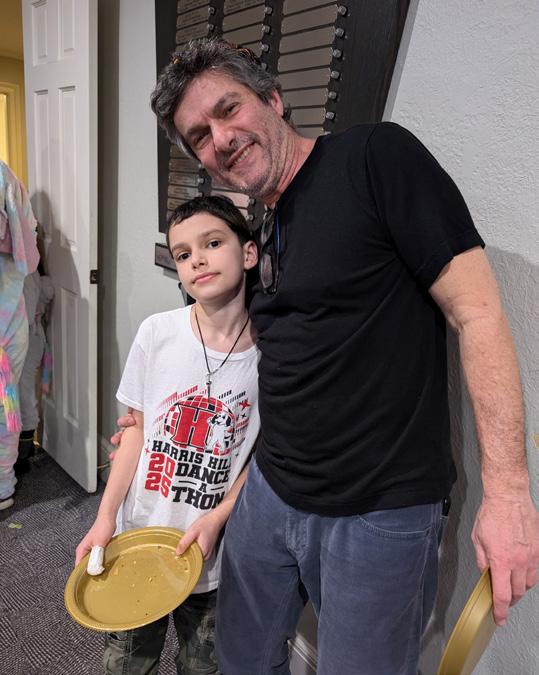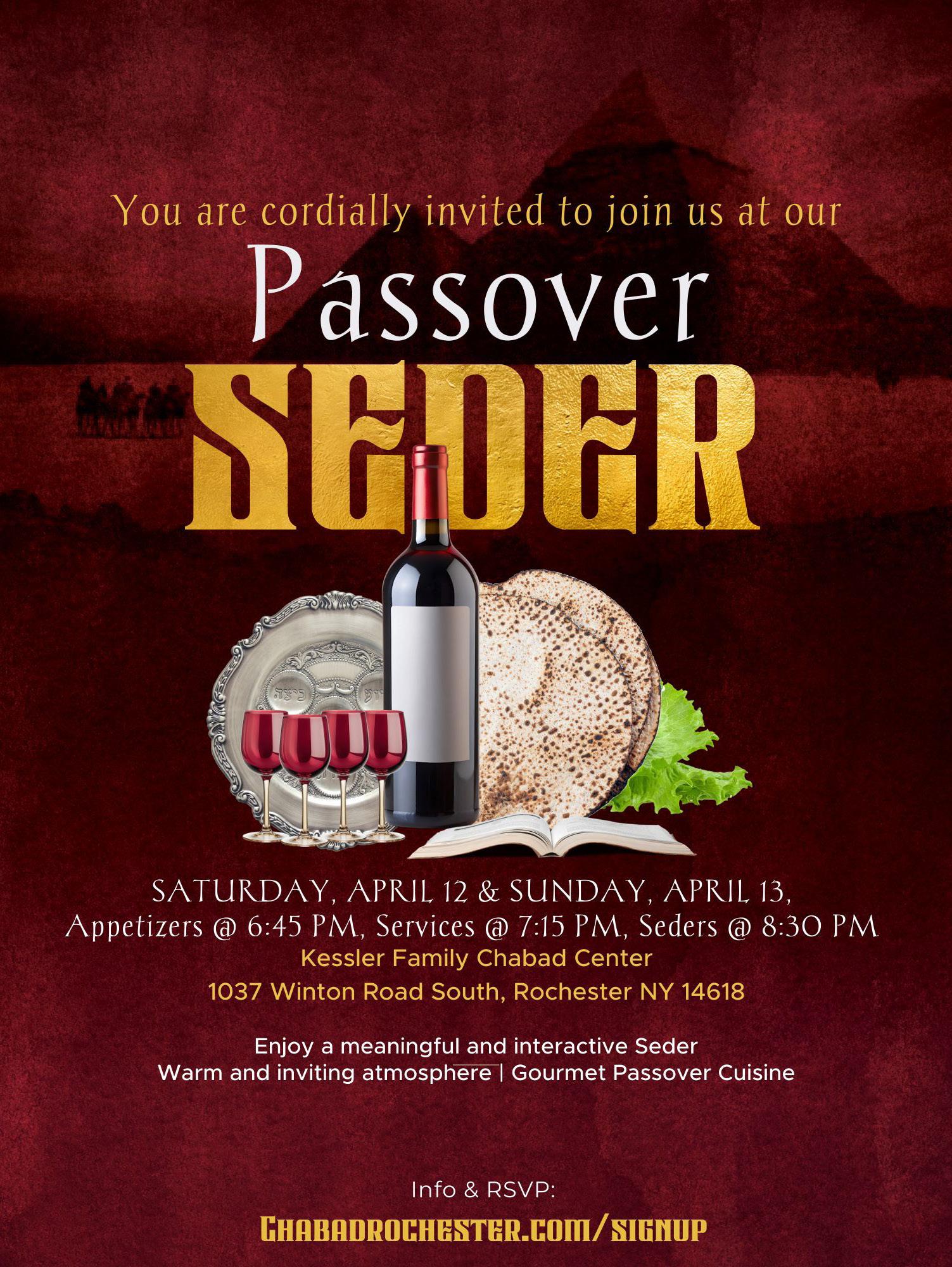

THE CHABAD TIMES
A Publication of Chabad Lubavitch of Rochester
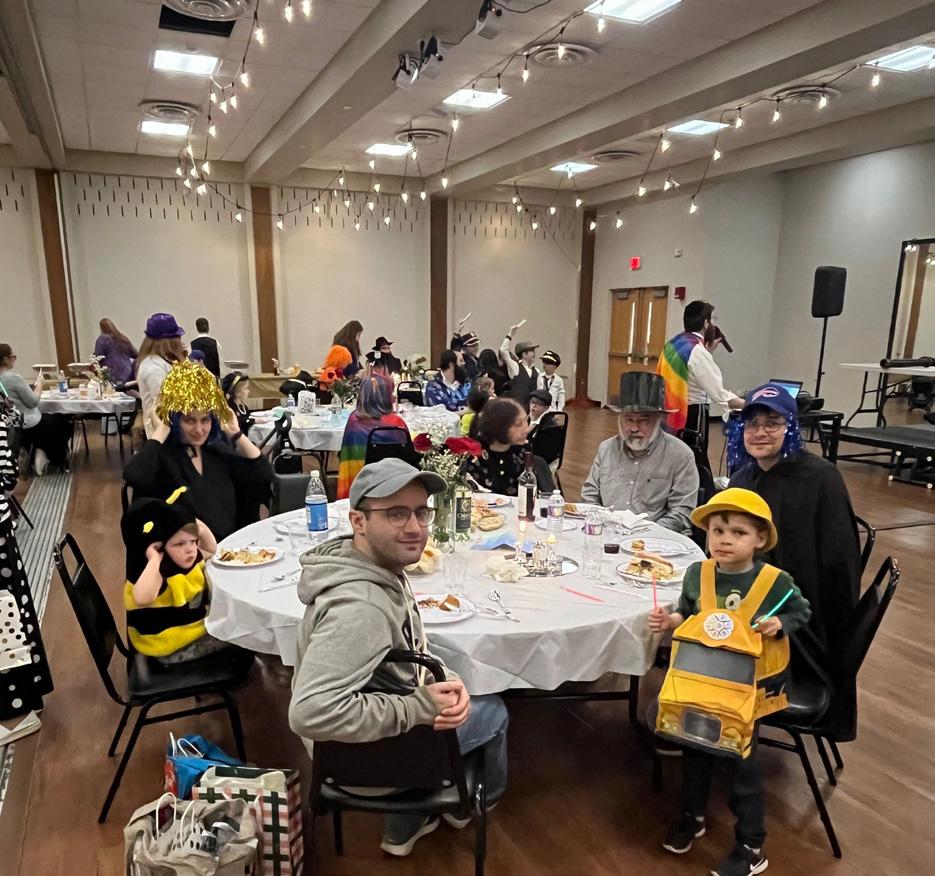
The Joy Of Purim
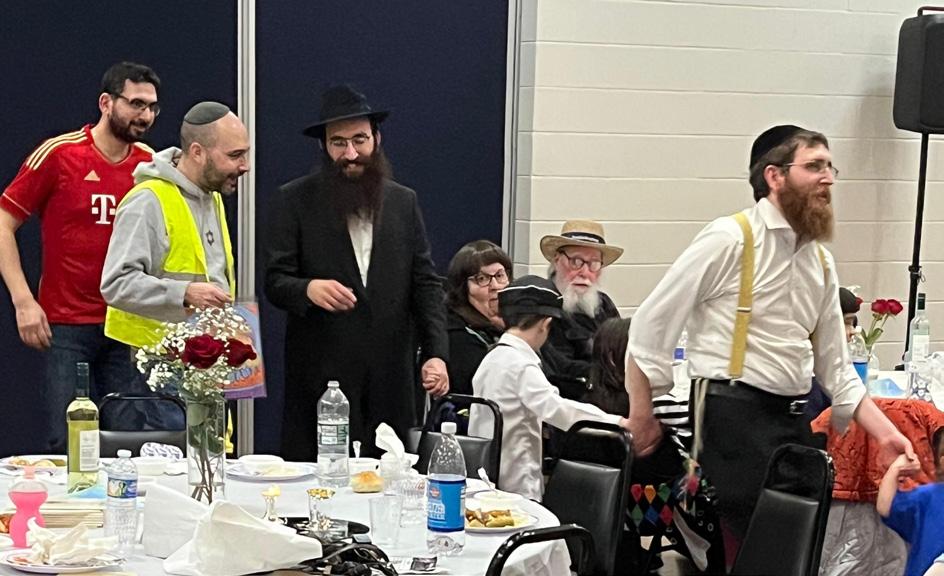

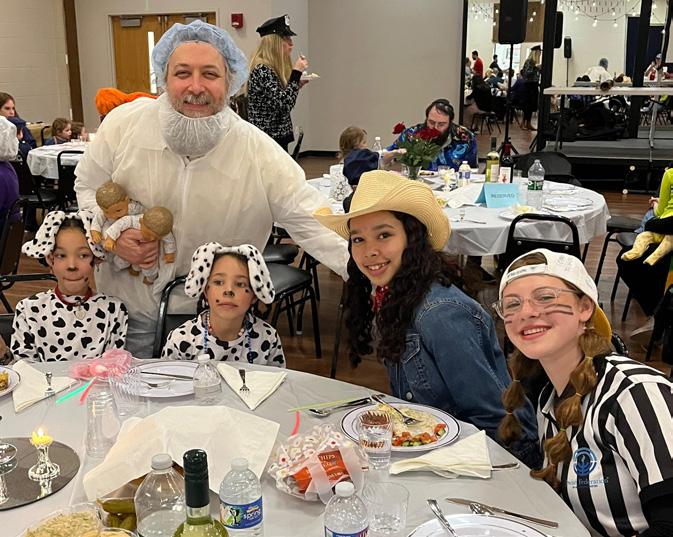
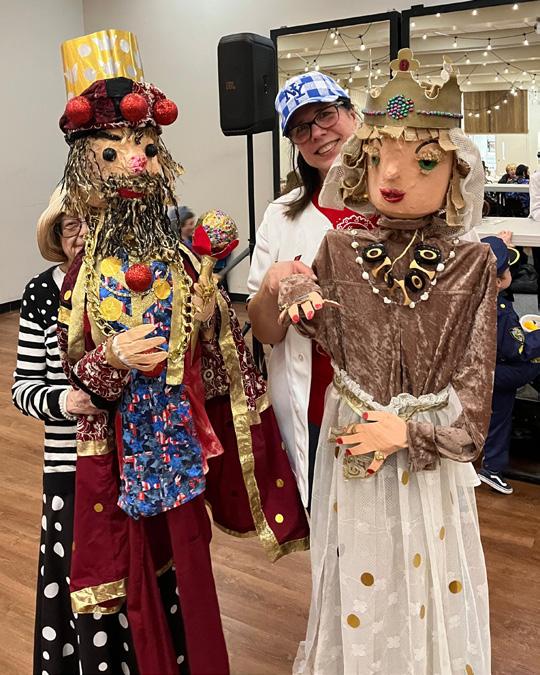





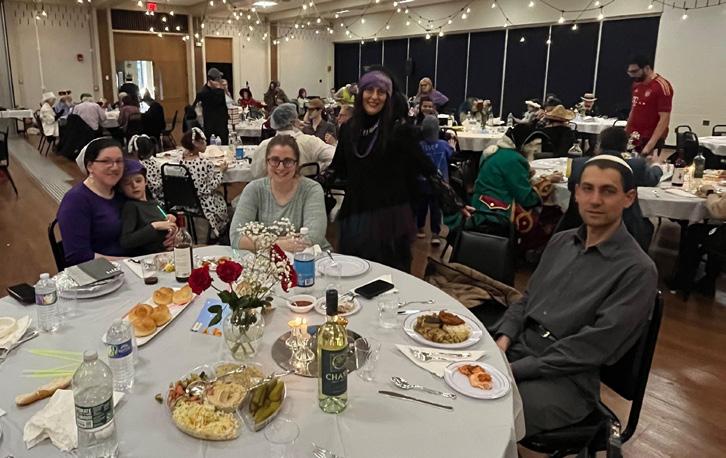
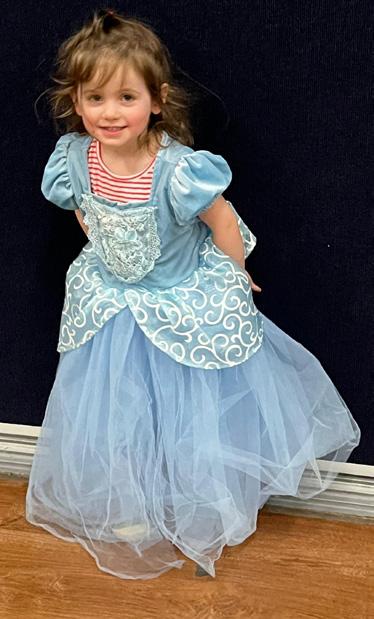


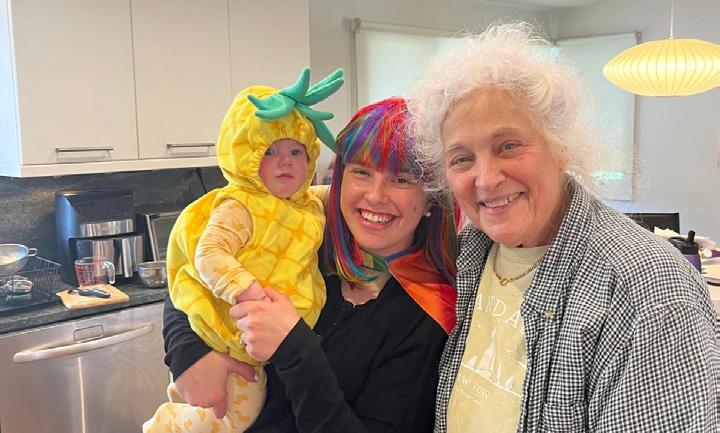
Spreading
The First Fast Food
Shalom Uverachah! Spring is in the air and once again we find ourselves preparing for Pesach, when we make the drastic and comprehensive (and time consuming!) switch from Chametz (regular bread, cake, cookies etc.) to Matzah.
Although they share the same basic ingredients, flour and water, Chametz and Matzah have little in common. From the moment the flour meets the water until it is placed in the oven the Matzah dough is constantly kneaded. The dough is swiftly placed in the oven and is baked within minutes. The entire process takes less than eighteen minutes - so that the dough does not have time to rise. Matzah, after it is baked, appears just like it was before - flat. From beginning to end utmost care is taken so that no time elapses unproductively. Hence the Matzah baker’s slogan: “Matzah - the first fast food; Speed is what we need; If we’re slow with the dough, the dough has to go!”
Throughout the entire process the Matzot remain constantly under watchful eyes, as the Torah tells us, “Guard the Matzot” to be certain that they have not been neglected even for a moment and that the dough did not have the time to rise.
Our Sages note that the phrase “Guard the Matzot” can also be read as “Guard the Mitzvot”, which implies that Mitzvot should be treated like Matzot - they too are to be “guarded” and approached with a sense of urgency and alacrity.
When we have an opportunity to do a Mitzvah we should not procrastinate and let it “sit around”. Like the Matzah dough every Mitzvah deserves our immediate attention; if we put it off till later we may lose it altogether. When it comes to a Mitzvah - “Speed is what we need!”

On 11 Nissan (April 9), Jews around the world will mark the day on which the Rebbe was born 123 years ago. When it came to Mitzvah campaigns the Rebbe imbued us with a sense of urgency. His upbeat enthusiasm electrified those around him to reach out to others wholeheartedly in the belief that every Jew yearns for the warmth of Mitzvot and the light of Torah. Today, the Rebbe’s legacy continues to enhance the quality of Jewish life everywhere.
Chametz, on the other hand, is prepared in a relatively relaxed atmosphere with no concern for the passage of time. On the contrary, in order to obtain a large fluffy texture the dough is left to sit idly. As the result of the causal approach, inactiveness and no sense of immediacy, the dough rises.
Kessler Family
Chabad Center 1037 Winton Rd. S. Rochester NY 14618
585-271-0330 chabadrochester.com
Rabbi Nechemia & Chanie Vogel
Rabbi Dovid & Chany Mochkin
Chabad Of Pittsford 21 Lincoln Ave. Pittsford NY 14534 585-340-7545 jewishpittsford.com
Rabbi Yitzi & Rishi Hein
Chabad Young Professionals 18 Buckingham St. Rochester NY 14607 585-350-6634 yjprochester.com
Rabbi Moshe & Chayi Vogel
It is thus a fitting time for us at Chabad to resolve to advance and perpetuate the holy work of the Rebbe - to heed his call to action to reach out to even more of our brothers and sisters with love.
Wishing you a Kosher and Happy Pesach - This year in Jerusalem with Moshiach!
Chabad Lubavitch of Rochester
Rohr Chabad House @ U of R 955 Genesee St. Rochester NY 14611 585-503-9224 urchabad.org
Rabbi Asher & Devorah Leah Yaras
NY
Chabad House @ R.I.T. 3018 East River Rd. Rochester NY 14623 347-546-3860 chabadrit.com
Rabbi Yossi & Leah Cohen
Chabad House @ SUNY Geneseo 650-675-8282 chabadgeneseo.com
Rabbi Laivy & Goldy Mochkin
We are not responsible for the Kashruth of any product or establishment advertised in The Chabad
Chabad Sunshine Circle 585-200-9709 chabadrochester.com
Rabbi Mendel & Mussi Vogel
Chabad Lubavitch of Rochester
Food For THoUGHT
No Bread
Bread is life. There are other components to the human diet, and technically we can subsist on other foods. But there is something about bread which marks it as the quintessential food, and as the metaphor for all that nourishes our existence.
Yet for eight days and nights each spring, the Jewish home is transformed into a bread-free zone. For the duration of the festival of Passover, not a bread crumb crosses our lips, and every trace of the offending substance is removed from our domain. On Passover, bread is more treif than pork.
Of course, it is not bread per se that we banish from our lives, but rather chametz, or leaven. Passover has its own version of bread: matzah. Matzah is bona fide bread, made by mixing flour with water and baking it in an oven. The difference is that instead of being allowed to ferment and rise before baking, matzah is mixed, rolled and baked in a lightning-fast process that produces the flat, cracker-like bread we encounter on the Seder table. Matzah is bread without the body, without the sponginess, without the
Yanki Tauber
Adapted from the works of the Rebbe by
flavor. In a word, bread without all the things that make bread “bread.”
Chassidic teachings explain that leavened bread represents ego and self-aggrandizement, while matzah represents humility. Thus, matzah is called “the bread of faith” and “the bread of healing.” The person who is pumped full of self, whose being is swelled by pride, leaves no room for a higher truth to enter his or her life. Instead, the bloat of ego becomes the
Hence the paradoxical nature of our relationship with bread - with the leavened sort, that is. On the one hand, for eight days each year it is eschewed, banned, eradicated. Yet for the rest of the year it is consumed, embraced, even celebrated.
festering ground for every spiritual and material ill. On the other hand, the humble soul is a soul receptive to faith, and humility is the healing
I Feel lIke a MaTzaH
by Menachem Posner
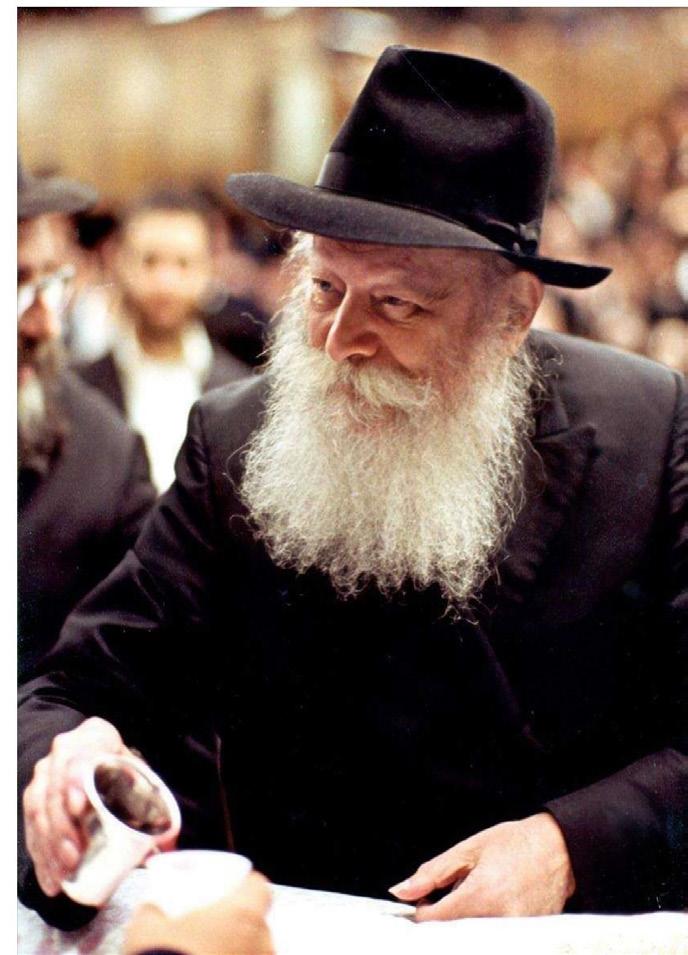
force that restores the person’s spiritual health and neutralizes the maladies of material life.
And yet, nothing is more critical to a life of meaning and productivity than a sense of self and self-significance. The Talmud tells the story of how the sages of Israel, identifying the ego as the source of all evil, decided to kill the inclination for selfishness in the heart of man - until they realized that if they succeeded in this endeavor, the world would quite literally grind to a halt.
Hence the paradoxical nature of our relationship with bread - with the leavened sort, that is. On the one hand, for eight days each year it is
Sometimes I feel like a matzah. (No, I do not feel like eating a matzah; I mean that I feel like I am an actual matzah.)
Did you ever look at a matzah and feel bad for it? Take a look at the shelves of the bakery. There are breads chock full of seasonings, made with the finest blends of flours, puffed to perfection. And then there is the traditional matzah, flat, plain, and bland. And then, just to add insult to injury, they poke holes all over the poor pancake to ensure that any remaining air escapes. Poor old matzah. Even white sandwich bread (which is notoriously lacking in nutrition and taste of any sort) has a shape. The matzah is in pretty sorry , huh?
But matzah has something that all others do not. It has crunch. Matzah does not go down without a fight. That is right, matzah is tough. And how did it get so tough? Because it was baked flat and full of holes. Sometimes those challenging moments, when we feel that we have been flattened and held against the ropes, are the very moments that make us stronger, better and crunchier.
Come to think of it, that is what Passover is all about. We were in Egypt. Things were tough. They almost had us down. But then we came back stronger, tougher and crunchier than ever.
eschewed, banned, eradicated. Yet for the rest of the year it is consumed, embraced, even celebrated.
When ego and self-interest form the basis of our lives, then everything built upon that foundation will be flawed, unsustainable, and ultimately corrupting. Life must be predicated on the acknowledgement that we exist in order to serve something that is greater than ourselves. Once that
THe escape HaTcH
You’re trapped in your marriage. You’ve said certain things, she’s said things, both quite unforgivable, so now you’re imprisoned in this cube of tense silence you used to call “home” and the only place to go from here is down. Yes, there is a way outjust yesterday there was a moment, a fleeting opportunity for reconciliation. But you were too big to squeeze through.
You’re trapped in debt. There’s the house redo you just had to do, the car you absolutely had to have, the vacation you simply wanted (you deserve something for yourself, too). The bills are closing in, and the only place to go from here is down. Yes, there’s a small opening, through which a tiny voice inside you sometimes beckons, “You don’t really need this.” But you’ve gotten too big to squeeze through.
foundation is in place, we must erect upon it an edifice that includes an appreciation of our own significance, a confidence in our abilities, a conviction that we can make a difference in our world, and the joy and satisfaction that come with a life of achievement and purpose. The foundation may be as flat as the self-effacing matzah, but the structure built upon this foundation is as robust and fla-
enough for you to see the escape hatch set high up in the wall - the way out to freedom. But it’s so small. Actually, it’s not so much that it’s small as that you need to make yourself small - veritably flatten yourself - to fit through. You need to deflate your selfhood enough to say to yourself: “Wait a minute! I’ve got the wrong idea of what it’s all about! It’s not about me, it’s about Us. It’s not about what I can be and have, but
vorful as a loaf of the richest bread. Passover marks our birth as a people, the very ground of our existence. As such, it is the festival of the matzah, a time to celebrate our humble faith in our Creator and our commitment to serve Him. Upon that foundation comes the rest of the year, when the bread of life attains its body and consistency, its savor and zest.
souls and replace it with matzah.
Chametz - grain that has fermented and bloated - represents that swelling of ego that enslaves the soul more than any external prison. The flat, unpretentious matzah represents the humility, self-effacement and commitment that are the ultimate liberators of the human spirit.
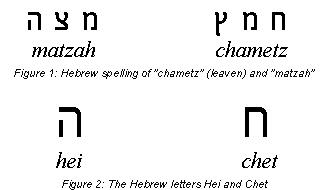
what I can do and accomplish.”
You’re trapped in your life. Whichever way you turn, you encounter walls - unshakable habits, antagonistic colleagues, elusive desires. The only direction that seems not to be closed to you is down - the direction leading deeper into the quagmire.
Sometimes, the weather clears
We celebrate the festival of Passover by eradicating all chametz (leavened foods) from our home and replacing it with matzah, the unleavened bread. The Chassidic masters explain that in order to re-experience the freedom of the Exodus - the moment in history that liberated our souls from all and any future forms of slavery - we must eradicate the chametz from our
The Rebbe points out that the liberating quality of matzah is also shown in the forms of the Hebrew letters that spell the words “chametz” and “matzah”. The spelling of these two words are very similar (just as a piece of bread and a piece of matzah are made of the same basic ingredients) - chametz is spelled chet, mem, tzadi; matzah is spelled mem, tzadi, hei. So the only difference is the difference between the chet and the hei - which, as the illustration shows, is also slight. Both the chet and the hei have the form of a three sided enclosure, open at the bottom; the difference being that the hei has a small “escape hatch” near the top of its left side.
Which is all the difference in the world.

Passover Guide 5785 - 2025
What Is Pesach - Passover?
On Pesach we celebrate the liberation of the Jewish People - not just our physical liberation from Egyptian slavery, but also our spiritual freedom from the ‘abominations of Egypt’. The civilization of ancient Egypt was steeped in idolatry and immorality. Beyond that, however, the name ‘Egypt’ - ‘Mitzrayim’, in Hebrew - implies ‘limitations’, or narrow straits. In a very real sense, freedom from the ‘abominations of Egypt’ is freedom from narrowness of mind, freedom from a constricted heart.
The Torah laws concerning Pesach, besides being G-dly commandments, are to help us experience this spirit of freedom. This guide, though concise, covers some practical details, the significance of the Seder, basic Pesach laws plus useful tips and profound insights to enhance your Passover experience.
Preparing The Home
What Is Chametz? Unique to Pesach is the eating of Matzah (Please Note: Matzah used all year round is not for Pesach use. Only Matzah baked especially for Pesach may be used on Pesach), and the stringent prohibition of eating or possessing Chametz. Chametz is a general term for all food and drink made from wheat, barley, rye, oats, spelt or their derivatives, which is forbidden on Pesach because it is leavened. Even a food that contains only a small trace of Chametz is prohibited and must be removed from our homes.
Getting Rid of Chametz: Obvious Chametz - both food and utensils used throughout the year (and not koshered for Pesach) - should be stored in closets or rooms that are not easily accessible (locked or taped shut). It should be sold to a non-Jew by filling out the sale form on page 3.
Clean the entire house thoroughly to remove all crumbs and small pieces of food. Also check for Chametz in the car and office (desks and drawers, etc.) clothes, pockets (especially the children’s), pocketbooks, and attaché cases. Vacuum cleaner bags should be discarded or cleaned.
Kitchen Koshering
To prepare the kitchen for Pesach, we must kosher it from Chametz that has been cooked in it.
Dishes and Utensils: Have special sets of dishes, silverware, pots, pans and other utensils for Pesach use only. (If necessary, certain ‘year-round’ utensils may be used provided they are koshered for Pesach. To do so, consult a Rabbi.)
Stove: Thoroughly clean and scour every part of the stove. Heat the oven to the highest temperature possible for 1-2 hours. Heat the grates and the iron parts of the stove until they glow red-hot. It is suggested that the oven and stovetop should be covered afterwards with aluminum foil.
Microwave Ovens: Clean the oven thoroughly. Fill a clean container (that was not used for 24 hours) with water. Turn on the microwave and let it steam heavily. Turn it off and wipe out the inside. To use the microwave during Pesach, use a flat piece of styrofoam or any other thick object, as a separation between the bottom of the oven and the cooking dish. When cooking, the food should be covered from all sides.
Sink: Meticulously clean the sink. For 24 hours before koshering it, do not pour hot water from Chametz pots into the sink. Afterwards, boil water in a clean pot (that was not used for 24 hours), and pour water 3 times onto every part of the sink, including the drain stopper. Afterwards, line the sink.
Refrigerator, Freezer, Cupboards, Closets, Tables and Counters: Thoroughly clean and scrub to remove any crumbs and residue. Afterwards, cover with a heavy covering those surfaces that come into contact with hot food or utensils.
Tablecloths and Napkins: Launder without starch.
Shopping For Pesach
While shopping for Pesach we must be careful that the
foods we buy are not only kosher but are also kosher-forPesach - that is, Chametz-free.
Starting From ‘Scratch’: All fresh fruits and vegetables as well as all kosher cuts of meat and kosher fish are kosher for Pesach - provided they have been prepared in accordance with Jewish law and have not come into contact with Chametz or Chametz utensils.
The prevailing Ashkenazic custom is that we do not eat on Pesach rice, millet, corn, mustard, legumes, (beans, etc.), or their derivatives.
Commercially Prepared Products: Nowadays, there are many Kosher-for-Pesach packaged foods available. However, care must be used to purchase only those packaged foods that have reliable Rabbinical supervision which is valid for Pesach.
Obviously, all leavened foods made from wheat, barley, rye, oats or spelt are actual Chametz and are prohibited on Pesach. Examples are bread, cake, cereal, spaghetti, beer and whiskey.
Check The Medicine Cabinet! Many medicines, sprays and cosmetics contain Chametz. Consult a competent Rabbi as to which ones may be used on Pesach. The same applies to pet food.
Pesach Calendar
On the evening before Pesach, make a formal search of the home for Chametz while holding a lit candle. It is customary to distribute ten small individually wrapped pieces of Chametz throughout the home before the search.
The Blessing: Recite the following blessing before the search: Boruch Atoh Ado-noi Elo-hei-nu Melech Ha-olom Asher Kidishanu Bemitzvo-tov Vetzi-vanu Al Bi-ur Chametz. Blessed are You, L-rd our G-d, King of the universe, who has sanctified us by His commandments, and has commanded us to remove the leaven.
The Search: Afterwards, hold the lit candle and search for Chametz in every room, as well as any other areas of the home that may have Chametz, such as the basement, attic, garage, or car.
When the search is completed, recite the following: ‘All leaven or anything leavened which is in my possession, which I have neither seen nor removed, and about which I am unaware, shall be considered naught and ownerless as the dust of the earth.’
Then take all the Chametz that was found in the search, cover it securely and place it in a conspicuous spot - this Chametz will be burned on Friday morning. Food intended to be sold or eaten later should similarly be carefully put aside. The search should also be conducted in one’s place of business.
Erev Pesach - Burning The Chametz: On the morning of Erev Pesach, (Passover Eve), Chametz may be eaten only
Chabad
in the early hours of the morning (see calendar for exact time). Burn the Chametz that was found during the previous evening’s search, or that was left over from breakfast and not included with the Chametz that was sold to the non-Jew. See calendar for the latest time to burn the Chametz.
After the Chametz is thrown into the fire, recite the following: ‘All leaven or anything leavened which is in my possession, whether I have seen it or not, whether I have observed it or not, whether I have removed it or not shall be completely considered naught and ownerless as the dust of the earth.’
Only Kosher for Pesach foods may be eaten. However, we do not eat Matzah until the Seder.
The Intermediate Days: In between the first two and last two days of Pesach, go ahead and function relatively normally. The only exception is, like your mother keeps telling you, you shouldn’t work too hard. But keep the wine flowing; it’s a custom to drink a glass of wine every day of Pesach.
Last But Not Least: On the last day of Pesach Yizkor memorial prayers are recited during services. Following the custom of the Baal Shem Tov, Pesach concludes with the ‘Feast of Moshiach’ - a festive meal complete with Matzah and, yes, four cups of wine. It begins before sunset and is designed to offer us a ‘glimpse’ into the Messianic age. Nightfall marks the conclusion of Pesach. Wait a while to give the Rabbi enough time to buy back your Chametz and then eat Chametz to your heart’s content!
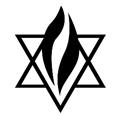

“Why do we eat matzah? Because our ancestors’ dough had no time to rise when G-d revealed Himself and redeemed them for Egypt.”
–The Passover Haggadah
IT TASTES DIVINE
Your Guide to Enjoying Shmurah Matzah
The traditional Passover matzah has no sugar, salt, yeast, or eggs, yet surprisingly, it packs all the essential divine ingredients we all need. The following are hand-selected tasty gems on the significance of eating matzah on Passover. Enjoy!
EDIBLE FAITH
Matzah is an edible faith when eaten with a blessing on Passover night. The matzah’s unique ingredient is the divinity within the commandment to eat matzah. This editable divinity enhances your divine connection and trust in G-d. Eating has an advantage over seeing, reading, or even meditating on the Exodus; as we physically digest the matzah, we internalize holiness and experience true freedom.
HEALING BREAD
Matzah is celebrated as the bread of faith and humility—intentionally made thin and unrisen to symbolize the absence of ego. The matzah inspires a faith that not only heals but also prevents illness.
TOXIN-FREE
Like the Passover offering, Jewish law requires us to eat the afikoman on a full stomach as an enjoyable dessert. This law
tells us that your hunger and need for G-dliness have brought you this far, but ultimately, your divine service should go beyond your hunger and needs. Savor this more selfless and heightened Afikoman service like a dessert that stays with you long after the meal ends.
PIECE IT TOGETHER
We begin telling the Passover story by first breaking the matzah. This demonstrates how our brokenness is only a beginning chapter in our tale of complete redemption. In the end, it's your brokenness that makes you whole.
IMPOSSIBLE BREAD
"This is the bread of affliction" that our ancestors ate when they thought redemption was impossible. But it happened, and now it will happen for you. •
>> Adapted from the teachings of the Rebbe.
WHAT IS SHMURAH MATZAH?

It only takes eighteen minutes for wet flour to become leavened or chametz. So, Shmurah Matzah, or guarded matzah, is made from verified wheat that's "guarded" from moisture during the entire process, from harvest to final product. Hand-made Shmurah Matzah is produced and baked quickly in increments of less than eighteen minutes from when the water comes in contact with the flour. The human touch infuses the process with the intended purpose of being baked for a mitzvah.
Photo credit: Smiling Soldiers Project
Journey To The Center Of The Seder
The Seder may appear like a drawn-out series of rituals, repeated year after year. But when it is experienced, we tap into the liberation energy that is present and break free from our personal bondage. Experiencing the Seder is like ascending a spiral staircase - we pass over the same points, but each year we reach a higher level.
To enhance your Seder, we describe the Seder Plate and highlight the 15 Seder steps, dividing them into “Body,” “Soul” and “Personal Application”. “Body” describes what we do at each step and how; “Soul” explores its deeper meaning; and “Personal Application” suggests an example of its effect on our daily lives.

The Seder Plate
The Seder Plate (Ka’arah) includes most of the ingredients that go into the making of the Seder. Its three matzahs and the six other items are arranged in a formation dictated by their mystical significance and relationship vis-avis each other.
Here’s how you set it up:
On top of a large plate, tray or cloth place three whole matzahs, one on top of the other. It’s best to use round, hand-baked shmurah matzah. Cover the matzahs with a cloth or tray. On top, position the following six items as pictured above right:
1) “Zeroa” - a roasted chicken bone with most of the meat removed. This will represent the Passover offering. It will not be eaten.
2) “Beitzah” - a hard-boiled egg, representing the festival offering.
3) “Maror” - grated horseradish (just the horseradish -not the red stuff that has vinegar and beets added) and/or romaine lettuce, for use as the “bitter herbs” (step #9).
4) “Charoset” - a paste made of apples, pears, nuts and wine. We’ll be dipping the bitter herbs in this (steps 9 and 10).
5) “Karpas” - a bit of vegetable, such an onion or potato (used in step #3).
6) “Chazeret” - more bitter herbs, for use in the matzahmaror sandwich (step #10).
We’ll also need a wine cup or goblet for each participant, and plenty of wine or grape juice (four cups each). And a dish of salt water (in which to dip the Karpas).
Matzah is unleavened bread. It’s made from flour (from one of the “five types of grain” - wheat, barley, oats, rye or spelt) and water only - absolutely nothing else - that are swiftly combined, kneaded and baked before the dough has a chance to ferment and begin to rise. It looks something like a large, round flat cracker. It tastes simply delicious.
Matzah may be flat, but it has many faces: it is the “bread of affliction” and the “bread of poverty” which our forefathers ate as slaves in Egypt. It’s the “bread of proclamation” over which we tell the story of the Exodus. It’s the “bread of humility” that represents our self-abnegating commitment to G-d, and the “bread of faith” that embodies our simple faith, trust and devotion to Him. It’s the “bread of healing” with which we imbibe spiritual wholeness and wellness into our beings.
Shemurah matzah (“guarded matzah”) is made from grain that is guarded from the time it was harvested lest it come in contact with even the merest hint of water or moisture. It is baked by hand, with the specific intention and awareness that it will be used as a vehicle of G-dly connection - to fulfill the mitzvah of eating matzah on seder night. (No machine can do that, can it?)

BODY: It’s been a busy week, or a busy year. The first step tonight is to forget the noise and leave it behind. Tonight we enter a timeless space, where we experience the Seder together with our great-grandparents and Moses. How do we begin? With a full cup of red wine. A cup filled with generations of rejoicing and tears and celebration and wisdom, and of doing just what we will do tonight.
Fill a cup with wine (or grape juice). That’s cup #1. You can have someone else fill your cup. Then return the favor. This way, we are all like nobility, whose cups are filled by someone else. Make sure your cup holds at least 86 mil. (a little more than three ounces).
Everyone stands and says Kiddush together. The rest of the year, one person says Kiddush for everyone at the table. Tonight, each man, woman and child recites every word together.
Drink. And get ready for some serious relaxing. Recline on a cushion to your left side. Remember the ancient times, when we used to recline on our couches while sampling
2. URCHATZ - PURIFICATION
BODY: Fill a cup with water. You could leave the table to go to the kitchen or you could bring a basin and towel to the table. (What? We just sat down and now we have to get up and leave? Well, that’s a fairly standard Jewish migration pattern.)

Pour the water over your right hand three times, then over your left hand three times. That’s how the Kohanim (priests) washed when they entered the Holy Temple in Jerusalem. Dry your hands.
Throughout the year we wash this way for bread and we would say a blessing at this point, but not now. When we wash the second time before eating the Matzah, we’ll say it then.
SOUL: Our hands are the instruments that allow the mind to interact with its environment. Our hands reflect our mental state, and act according to our emotions: love, fear, compassion, the urge to win, to be appreciated, to express ourselves, to dominate. But too often the aspects of our
3. KARPAS - THE APPETIZER
BODY: Take a small piece of vegetable (onion, potato, parsley). The rest of the year, we would be getting to the meal now. But we’re doing things differently tonight, principally to spark questions from the small children. If
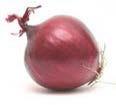
grapes? That’s what we are dramatizing by reclining now. Tonight we are free.
SOUL: Every journey begins with a separation. You’ve got to leave somewhere to get somewhere else. In this way, separation is the first step to freedom. By ignoring the negative voice of Pharaoh’s mockery that says,“Who are you to begin such a journey?”, we’re ready to leave Egypt behind.
Separation is the first meaning of the word kadesh — to transcend the mundane world. Once you’ve set yourself free from those things that hold you down, you can achieve the second meaning of the word kadesh — to return and sanctify it. Spiritual freedom is achieved through sanctifying the material world, using its elements as physical expressions of a higher purpose. The first two steps of the Seder, Kadesh (to separate/sanctify) and Urchatz (purify), describe what we set out to accomplish through this night: to rise above the restraints of our world in order to elevate it.
PERSONAL APPLICATION: Bondage Mentality: Look, I’m a down-to-earth kind of person. I’m trying to manage real life. I can’t get into this spirituality stuff. Let’s just get to the Matzah. Freedom Mentality: I can master my world by staying above it. I come to the Seder to get that strength.
Kadesh - Time to split!
psyche sit compartmentalized, detached from one another. The mind sees one way, the heart feels another, and our interface with the world is disoriented.
Water symbolizes wisdom. Flowing downward from onhigh, everything in its stream is affected by its pure and simple essence. We pour water over our hands so that our heart and emotions may be touched by wisdom, and from there shape our interaction with the world.
A wise rabbi asked, “Wouldn’t it make more sense to wash first and then say Kiddush? To first purify, so you can then sanctify?” Then he answered, “First you need to get out of the pit, and then to clean up your act. That’s why G-d first took us out of Egypt and only then had us purify ourselves for 49 days in the wilderness to prepare us for the revelations at Mount Sinai.”
PERSONAL APPLICATION: Bondage Mentality: Just react. Let your instinct be your guide. Freedom Mentality: Count to 10. Let your mind and heart talk things over with one another.
Urchatz - It’s a clean scene!
they ask, “Hey mom and dad! Aren’t we supposed to eat real food now? Why the funny green stuff?” - you know you’re doing things right.
How do you answer them? “We are doing this so that you will ask questions. You can’t learn if you don’t ask questions. And the first thing to learn is that not all questions
have immediate answers.” This is one of the most distinctive elements of Jewish education: more than we teach our children how to answer, we teach them how to ask - and how to be patient in their search for answers.
Dip it into saltwater. These are our tears, and the tears of all our people beginning with the tears of our labor in Egypt. Look at the Hebrew word Karpas and read it backwards, Samach Perekh. That refers to the backbreaking labor (Perekh) of the 600,000 Jewish slaves (Samach = 60 x 10,000). Say the blessing that is said over the vegetable, and munch it down. Munch well. You’re not going to get much more for a while.
SOUL: In order to liberate ourselves from Egypt, we need to taste its harshness again, because this harshness prepares us for freedom. This labor gives us the humble spirit to accept wisdom.
About the Seder and the Child: On the night that we left Egypt, we were like a newly hatched chick, breaking out of our shell to discover life and the light of day. It was with
4. YACHATZ - BREAKING THE MATZAH
BODY: Remove the middle Matzah. We need the top Matzah to remain whole because we’ll make a blessing on it later on. (Blessings are said on whole things.) Break it in two different-sized pieces. Put the smaller piece back between the two complete Matzos.
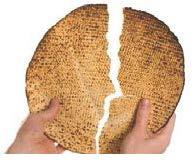
The piece you put back is the “poor man’s bread” over which the tale of our slavery is recounted. Poor people only eat a small portion of their bread - saving the rest in case there is no more tomorrow.
Wrap the remaining (larger) piece in a cloth. Hide the package until the end of the Seder when it will be eaten as the Afikoman, or dessert. In many homes, the children hide the Afikoman and the adults have to find it at the end of the meal. In others, the adults hide it and the children find it. Either way, it keeps the kids awake and in suspense until the end of the Seder.
5. MAGGID - THE HAGGADAH
This is it, folks. This is why it’s called a Haggadah. Now we get to the meat & potatoes your SOUL: is longing for. (As for the other meat & potatoes, you can probably smell them in the kitchen. Hold on, we’ll get there soon.)
BODY: Fill your cup with wine (or grape juice). That’s cup #2.

There are “four sons” at the Seder table, as described in the Haggadah. The second cup corresponds to the second
those fresh eyes that we were able to experience wonder, to travel forth with faith and innocence and trust. So tonight, again, we enter the mind and heart of a child.
The child is the most important participant at the Seder. In fact, the entire Seder with all its customs revolves around the child. The Mitzvah of the Haggadah is “to tell the story to your child.” The child asks, we respond.
But more than the child learns from us, we learn from the child. We awaken the mystical child within us, the place that is still innocent and fresh and able to grow, to be amazed, to sense awe. Rabbi Yosef Yitzchak of Lubavitch once said, “If you want to know what it is like to see with the eyes of a prophet, to experience the Divine Spirit resting upon you, look at life the way you did as a child.”
PERSONAL APPLICATION: Bondage Mentality: I owe, I owe, so off to work I go. Freedom Mentality: My work helps me appreciate the higher things in life.
Karpas - For bitter, or worse?
Some Sephardic Jews have the tradition of tying the Afikoman under the arms of the children, who carry it like that all night, just like when we left Egypt.
SOUL: Why is so much broken in this world? Why did the Creator make a world where hearts break, lives shatter, beauty crumbles?
Because a whole vessel can only contain its measure, while a broken one can hold the Infinite. Matzah is called the poor man’s bread. He is low and broken. And it is this being broken that allows him to open his soul and escape his Egypt. As long as we feel perfectly whole, there is no room left for us to grow. When we realize that we are just a fragment — that we need the others around us, that so much of ourselves is missing — then miracles begin.
PERSONAL APPLICATION: Bondage Mentality: I know who I am. Look at what I have achieved! Freedom Mentality: There is so much that I am lacking. I have only started to grow.
Yachatz - Flat broke... got any bread?
child - the “wicked” child. This is the cup the story is told over. The “wicked” child is the one who needs this story most, and the one who can really appreciate it. Children ask the Four Questions. Of course, they can always ask more. No children at your Seder? Let an adult ask. There’s just you? You be the child, and G-d will be the Father. While you’re at it, ask Him a few other difficult questions for us all.
Continue recounting the Passover story in the Haggadah. Hey, you’re not limited to the Haggadah! That was written so that everybody would have something to say. But now
The Chabad Times - Rochester NY - Nissan 5785 is the chance to get creative. In addition to the Haggadah text, tell every story you know about the Exodus. Examine the Haggadah and get into its deeper meaning. Keep it real - make it profound.
Basic rules of telling the story: 1. Get the children involved. 2. Start with Abraham and Sarah and work your way through the Egyptian scene until we receive the Torah at Mount Sinai. 3. Tell it in the first person, in the now. Instead of, “Long ago, the ancient Hebrews. . .” say, “When we were slaves in Egypt, the perverse system crushed our sense of self.” Everything that happened in Egypt parallels something within. We are truly living it now. We are simply examining our own lives in the dress of ancient Egypt. 4. It’s all about miracles. Moses and his signs and wonders. The ten plagues. The splitting of the sea. These miracles happened so that we would look at the events of our lives and recognize that they too are miracles. Tell it like it is. We are a people born of miracles, who endured this long by abrogating natural law. The very fact that we are here now telling this same story to our children in an unbroken chain of thousands of years is beyond human comprehension.
6. ROCHTZOH - WASHING FOR MATZAH
BODY: Fill a cup with water. Again? Yes, again. It’s been a long time since the last washing. (And it’s good to get up and stretch a little.) Pour the water over your right hand three times, then over your left hand three times. Say the blessing: “Blessed… concerning the washing of the hands.” Dry your hands.

SOUL: As long as we live in the world, freedom remains elusive. While moving forward, we are free. Stop, and we are fettered again.
That is why freedom is something that you cannot buy or steal. Never can you put freedom in your purse and say, “Freedom is mine forever!”
Spiritual freedom is like a marriage between our finite selves and the Infinite, providing the power to transcend
7. MOTZI - THANK G-D FOR BREAD
BODY: Grab all three Matzos - the top one, the broken middle one and the bottom oneand pick them up. Say the blessing: “Blessed... Who brings bread out of the earth.”
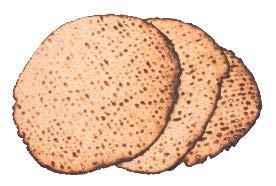
This blessing, “Who brings bread out of the earth,” may seem ordinary, even odd. But think about it: The earth upon which we tread germinates all the nutrients a human being needs to survive - it is the substance that powers our thoughts, creativity, music, art, philosophy, meditation, and prayer.
We say a blessing and drink the second cup of wine at the end of this step.
SOUL: The Exodus is not simply an event that happened to us. It is an event that we became. It is who we are. It is the life of each one of us, occurring again and again, in our wrestling match with the world, in our struggle with our own selves. We embody freedom in a constant mode of escape. Perhaps that is why Jews have always been rebels of society.
The experience of leaving Egypt left such an indelible mark on our souls that we never stop doing it. A Jew who stops leaving Egypt ceases to allow his soul to breathe. The story brings our essential self into the open, and to come face-to-face with who we really are.
PERSONAL APPLICATION: Bondage Mentality: I’m free already. I live in a land of freedom. Who needs more freedom than that? Freedom Mentality: My body is free because my soul is free.
Maggid - Tell the Story!
the material world while working inside of it. It is a marriage of heaven and earth, spirit and matter, soul and body. And like marriage, it is kept alive through constant renewal. Our release from slavery was only the first step of our Exodus. We were granted eternal freedom — the power to perpetually transcend Egypt.
That’s the order of the Seder tonight: Kadesh, Urchatz — Transcend and Purify. Over and over. Rise higher, then draw that into deeds. Rise higher again, draw even more. Never stop rising. Never stop applying.
PERSONAL APPLICATION: Bondage Mentality: Passover? Been there, done that! Freedom Mentality: Each year at the Seder, I discover new things that I just never saw before.
Rochtzoh - Free your mind and the rest will follow!
SOUL: We feel an affinity with foods we eat: we too are a miracle out of the earth. We share a common journey with bread. The bread begins as a seed buried beneath the ground. And then, a miracle occurs: as it decomposes and loses its original form, it comes alive, begins to sprout and grow. As Spring arrives, it pushes its way above the earth to find the sun, and then bears fruit for the world.
We too begin buried in Egypt, our identity all but lost. But that furnace of oppression becomes for us a firing kiln, a baker’s oven, and the womb from whence we are born as a nation in the Spring. In our liberation, we bring our fruits of freedom to the world.
PERSONAL APPLICATION: Bondage Mentality: I’m stuck here under the ground. Life is rotten. Freedom Mentality: My challenges in life help me discover the strength of my soul.
8. MATZAH - BLESSING & EATING
BODY: Carefully release the bottom Matzah. Recite the blessing on the top Matzah and the broken middle matzo: “Blessed...and commanded us concerning eating Matzah.” Hold it! Didn’t we just say a blessing on the Matzah bread? That blessing was for giving us what to eat. Now we bless G-d for connecting us to Him through the Mitzvah of eating Matzah.

Break off a piece from each of these two Matzos for yourself and for each of those sitting at your table. Pass them around. Everybody eats at least two thirds of a Matzah (one ounce from each Matzah - to do this, they will need to help themselves to an auxiliary reserve of Matzah.) Hey, it’s a Mitzvah after all! Lean to the left while you munch.
SOUL: Since the destruction of the Holy Temple in Jerusalem, Matzah is the only opportunity we have to actually eat a Mitzvah. That’s right, the Matzah you are eating is pure G-dliness.
The Zohar calls Matzah, “Bread of Faith” and “Bread of Healing. “Faith?”
Well, actually, that’s a rather feeble translation. “Emunah” is a word in Hebrew, and it means a lot more than “I believe.” Faith can often be something people claim when they don’t care to think too much. Emunah is when you
9. MAROR - THE BITTER HERBS
BODY: Grab some of that bitter herb (horseradish, romaine lettuce or both). Take enough to make the size of an olive if you were to crunch it into a ball (one ounce). Dip the bitter herb in the Charoset. Shake off any excess.
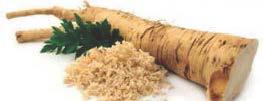
It’s a careful balance: you want bitter herbs, but you want to sweeten the bitterness. But it still has to be bitter herbs - not a sumptuous Charoset hors d’oeuvres.
Say the blessing: “Blessed... and bonded with us through the eating of bitter herbs.” Eat the bitter herbs without reclining. (Don’t worry if it doesn’t taste that great - it’s not supposed to.)
SOUL: We can never get used to Egypt. We never belonged there. We can never say, “They are the masters and we are the slaves and that’s the way it is.” It must remain
10. KORECH - THE SANDWICH
BODY: Break the bottom Matzah into two pieces. If you’ve followed the instructions until now, the bottom
Motzi - You eat what you are!
go beyond thinking to a place your mind could have never brought you.
Emunah means touching the place where your soul and essence of the Infinite Light are One. It’s a place that nothing can describe. Where there are no words. No doubts, no uncertainty, no confusion, nothing but a magnificent Oneness before which nothing else exists and the challenges of life withdraw.
Eating Matzah is a way of tapping into that reservoir. Your physical body digests the Emunah of your soul, everything is integrated back into One, and your body and soul are whole and harmonious.
How on earth can a mixture of water and wheat baked in an oven contain such a spiritual cure? Welcome to Judaism, where there is no dichotomy of spirit and matter, SOUL: and BODY:. Where the spiritual transforms into the physical, and material objects become spiritual in a perpetual chemistry of exchange. Where the body is healed through empowering the soul, and the soul is nourished with the rituals of the body. (After all, we live in the world of One G-d.)
PERSONAL APPLICATION: Bondage Mentality: Sure, I’ll eat a little Matzah because that’s the tradition. Freedom Mentality: I can’t get enough of this stuff! Feed me Matzah! Feed my soul!
Matzah - Soul Food!
something we remain bitter about, something that is unjust and needs to change.
If we get used to Egypt, it is very hard to leave. In fact, many Jews said, “Egypt is our land. How can we leave it?” And they stayed and died there.
As for the rest of us, when Moses came and told us we were going to leave, we believed him. It was our bitterness that had preserved our faith. This is the sweetness we apply to the bitter herb: bitterness alone, without any direction, is self-destructive. Add some life and optimism to it, and it becomes the springboard to freedom.
PERSONAL APPLICATION: Bondage Mentality: Look, this is what I’m used to. I can’t change. Freedom Mentality: I don’t belong to my habits.
Maror - Perception or possibility?
Matzah should still be whole. Take an ounce of the bitter herbs (horseradish, romaine lettuce or both) and dip it into the Charoset. Shake off any excess.
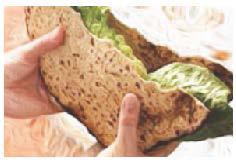
Now you know what the second pile of bitter herbs on the Seder plate is for. Place the bitter herbs in between your two pieces of Matzah. Say the words: “This is what Hillel did when the Holy Temple stood. He wrapped some Pesach lamb, some Matzah and bitter herbs and ate them together.” Hillel understood the words of the Torah about the Pesach lamb, “with Matzah and bitter herbs you shall eat it,” in their literal sense. And so he invented the sandwich. (Or should we call it a Hillel?) Lean to the left while you eat.
SOUL: The world, when viewed from within Egypt, looks to be a mass of fragments. It’s a “Passoverly Challenged” perspective. Plain materialism.
Mitzvahs appear to be a mishmash of dos and don’ts; the Jewish people are a collection of irreconcilable individuals;
11. SHULCHAN ORECH - THE FEAST

BODY: Time to really eat. You know how to do this, right? Oh, don’t forget the tradition of eating the boiled egg on your Seder plate, dipped in some saltwater. Most do this at the very beginning of the meal. A boiled egg is a sign of mourning and symbolizes the cycle of life. On every festive occasion, we mournfully remember the destruction of our Temple and Jerusalem. Note: The chicken neck is not eaten at the Seder.
SOUL: This step, along with Korech before it, marks the re-entry we mentioned at the beginning (in Kadesh). We’ve escaped Egypt and reached a higher vision. But freedom consists of more than escape. Complete freedom is when you can turn around and liberate all the elements of your
12. TZOFUN - OUT OF HIDING
daily life is a cacophony of hassles and just, well, stuff. Once we escape materialism’s gravitational pull, we look back and see a whole new perspective. Mitzvahs are multiple expressions of a single spiritual path; Jews are multiple faces to a single soul; elements of today’s journey harmonize together as a delicate symphonic melody.
After we make ourselves into a temple for the Divine, then the bitter, the sweet and the tasteless responsibilities of life wrap together in a single package.
PERSONAL APPLICATION: Bondage Mentality: I have to take care of career, family, health, hobbies, handball, friendships, parents, taxes, the house, the car, the cat... Freedom Mentality: I am a conductor and the world is my orchestra to play a symphony for its Creator.
Korech - All together now...
world from their pure material state, and make them transcendent as well.
That’s what we do when we eat every day – we take foods grown from the earth, say a blessing over them and bring them into our journey as human beings. And when it’s a Jewish holiday or Shabbat, we elevate them further, into the realm of pure spirituality. As for tonight, this meal is going to be truly Divine.
So don’t imagine we’re just feasting. We’re reaching a higher state. And it’s a great way to do it.
PERSONAL APPLICATION: Bondage Mentality: I am a slave to food. I live to eat. Freedom Mentality: I am a food liberator. I eat to live.
Shulchan Orech - Feed your head!

BODY: Grab that last bite. Be sure you’ve eaten enough, because the only thing to pass our lips after this step of the Seder tonight is another two cups of wine (Oy!). Retrieve that hidden Matzah. If you can’t find it, you may have to enter into negotiations with your kids to get it back. Eat another twothirds of a Matzah. Lean to your left.
With the first Matzah, we fulfilled the Mitzvah to eat Matzah. This one is also in place of the Pesach lamb, which is meant to be eaten on a full stomach.
SOUL: There is the body, there is the soul, and then there is the essence. If the soul is light, then that essence is its generator. The Kabbalah teaches that this essence remains elusive. It is called “Tzofun,” meaning hidden, concealed, locked away and out of reach. It is unlikely to experience it.
We dance around the essence-core, like a spacecraft in
orbit, unable to land. We can be inspired, we can meditate, we can pray, but to touch this inner core – the essence of our soul – takes a power from beyond.
On Passover night, we have that power. But only after all the proper steps: destroying our internal chametz, preparing our homes for liberation, the previous eleven steps of the Seder. Then, when we are satiated with all we can handle, connecting every facet of ourselves to the Divine, that’s when the power comes to us. Whether we sense it or not, tasteless as it may seem, the Matzah we eat now — the Matzah of Tzofun — reaches deep into our essence and transforms our very being.
Those things you find inspiring and nice may take you a step forward. But to effect a real change, you need to do something totally beyond your personal bounds.
PERSONAL APPLICATION: Bondage Mentality: Seeing is believing. Freedom Mentality: Believing is seeing.
Tzofun - Now find the power!
13. BAIRACH - GRACE AFTER MEAL
BODY: If you’re still awake now, you know it’s getting late. Adults are falling asleep. Kids are having a great time taking advantage of that. But it’s not over. There are songs and wine, and Elijah the Prophet is on his way...

Fill your cup with wine (or grape juice). That’s cup #3. Say the Grace After Meals as printed in your Haggadah. Say a blessing on the wine and drink it all down. Lean to your left.
SOUL: The theme of the Grace After Meals is confidence.
14. HALLEL - SONGS OF PRAISE
BODY: Now fill your cup with wine (or grape juice). That’s cup #4. Yes, you can handle it.
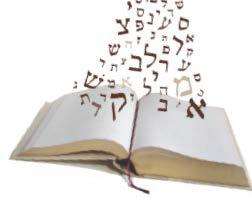
The kids open the front door to welcome Elijah the Prophet. Recite the prayer, “Pour out Your wrath...” from the Haggadah. Watch Elijah enter. (Can’t see him? Maybe you’ve had too much wine.)
Tonight is called “Leil Shimurim” - a night of protection - when we are secured by G-d’s gentle hand. We open our front door in the middle of the night with confidence and trust that no harm will befall us. On that very first Passover in Egypt, we were redeemed in the merit of our trust that He would redeem us. Tonight we are liberated again, and again we demonstrate our trust. It’s all there, in your Haggadah. Sing whatever Psalms you know a song for.
15. NIRTZAH - ACCEPTANCE
Confidence in a Higher Force that is with us in our daily lives. Why did miracles happen in Egypt? Because we believed they would. Those who didn’t believe in miracles saw only plagues. To see a miracle, you need an open heart and mind, open enough to receive the Infinite. That is the opening we make when we thank G-d for the miracle of our food.
PERSONAL APPLICATION:
Bondage Mentality: I thank G-d for giving me what I need. Freedom Mentality: I thank G-d for letting me know what He “needs” from me.
Berach - A new opening...
At the end, say a blessing and drink the fourth and final cup of wine whilst leaning to you left (after four cups of wine the leaning comes naturally!).
SOUL: The ancient rabbis clued us in on a key principle in the cosmic function: whatever G-d tells us to do, He does Himself. Of course, there’s a difference. We do it in our little human world, while He does it on a grand cosmic plane. He told us to open our door on the night of Passover. So, tonight, He opens every door and every gateway of the spiritual cosmos to all of the Jewish people. To each one of us, regardless of what we have been doing the rest of the year, tonight is our chance to reach the highest of spiritual levels.
PERSONAL APPLICATION: Bondage Mentality: Since it’s Passover, I’ll make a little change. Freedom Mentality: Since Passover, I totally changed.
Hallel - Lechaim!
of miracles. But this time, forever.
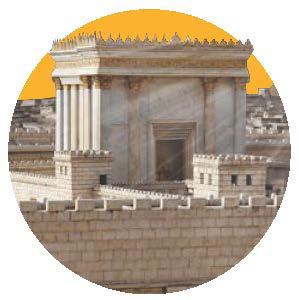
BODY: This last step of the Seder is easy: expect a miracle. (This is His job now.) Look up from your wine. The table’s a delicious mess. Uncle Irving is snoring in his Haggadah, serenaded by the first chirping of dawn. As you carry the little ones to their beds, the sound of Matzah crunching beneath your feet, you wonder, “Who will carry me to bed?”
Was it the best Seder that could have been? Look, it had its highlights. A few times, the kids got a little over-excited. And the horseradish and chicken soup didn’t mix too well. Grandpa told some great stories, but we heard them last year. We all had fun with the songs. We told the tale again, with new embellishments, just like we have for 3,329 years. We did what we are supposed to, in our own human way.
And now, let the Creator do what He has promised to do: a rerun. Starring us, in the Ultimate Redemption. With lots
SOUL: If G-d wanted us to be perfect, why did He create such imperfect beings? Because what He wants of us is our very humanity. Sometimes we do good. Sometimes we fall. But we keep on struggling, and eventually make some real change in order to create a perfect world. And then, once we have done all we can, like a kind parent helping with the homework, He makes sure to touch up our work and make it shine.
For thousands of years we have been leaving Egypt. For thousands of years we have been doing our human job of transforming the darkness of His world into light. And now it is His turn to banish darkness forever, to make our work shine.
PERSONAL APPLICATION: Bondage Mentality: Yaaawwwn! Well, there goes another Passover night under the belt. Freedom Mentality: I’m done with Pharaoh; I’m through with Egypt. Take me to Jerusalem!
Nirtzah - Discover your miracle!
The Chabad Times - Rochester NY - Nissan 5785
The Pesach Calendar 5785 - 2025
Times shown are for the Rochester Area
April 10: Formal search for chametz after 8:19 p.m.
April 11: Burn Chametz before 11:55 a.m.
Light Shabbat candles and say blessing #2 by 7:31 p.m.
April 12: Stop Eating Chametz before 10:54 a.m.
Flush Chametz by 11:55 am
Light Yom Tov candles from a pre-existing flame* after and say blessings # 1 & 3 after 8:34 p.m.
Start the Seder. Eat at least 1 oz. of Matzah within 4 minutes after 8:34 p.m.
April 13: Light Yom Tov candles from a pre-existing flame* and say blessings # 1 & 3 after 8:35 p.m.
Start the Seder. Eat the Matzah again
April 18: Light Shabbat & Yom Tov candles and say blessing # 4 at 7:39 p.m.
April 19: Light Yom Tov candles from a pre-existing flame* and say blessing # 1 after 8:43 p.m.
April 20: Yizkor, Pesach ends at 8:45 p.m.
FORM FOR SELLING YOUR CHAMETZ
We include, as a public service, a legal form for the Sale of Chametz. Besides not eating Chametz (leavened foods such as bread, cakes, cookies, pasta, beer, whiskey, etc.) on Pesach, we are also forbidden to possess Chametz. In order to avoid this prohibition we lock up any Chametz (this includes "Chametzdik" utensils) and empower a rabbi (through power of attorney) to sell it to a non-Jew before Pesach. This is a legal binding sale that is recognized by the courts. After Pesach the rabbi then buys the Chametz back from the non-Jew and we are thus able to use it again. Fill out the form below, sign it and mail it to us and we will take care of the Sale of Chametz for you.
KNOW YE that I, the undersigned, fully empower and permit Rabbi Nechemia Vogel to act in my place and stead, and in my behalf to sell all Chametz possessed by me (knowingly or unknowingly) as defined by the Torah and Rabbinic Law (e.g., Chametz, possible Chametz, and all kinds of Chametz mixtures.) Also Chametz that tends to harden and to adhere to inside surfaces of pans, pots or cooking and usable utensils. And to lease all places wherein the Chametz owned by me may be found, especially in the premises located at:
Wait one hour before eating your chametz to allow time for the Rabbi to buy it back for you.
*A pre-existing flame is a flame burning continuously since the onset of the festival, such as a pilot light, gas or candle flame.
BLESSINGS FOR FESTIVAL CANDLE LIGHTING:
1
Bo-ruch A-toh Ado-noi E-lo-hei-nu Me-lech
Ho-olom A-sher Ki-de-sho-nu Be-mitz-vo-sov
Vi-tzi-vo-nu Le-had-lik Ner Shel Yom-Tov.
2
Bo-ruch A-toh Ado-noi E-lo-hei-nu Me-lech Ho-olom A-sher Ki-de-sho-nu Be-mitz-vo-sov Vi-tzi-vo-nu Le-had-lik Ner Shel Shabbos Kodesh.
3
Bo-ruch A-toh Ado-noi E-lo-hei-nu Me-lech Ho-olom She-heh-che-yoh-nu Vi-kiye-mo-nu Ve-he-ge-o-nu Lizman Hazeh.
4
Bo-ruch A-toh Ado-noi E-lo-hei-nu Me-lech
Ho-olom A-sher Ki-de-sho-nu Be-mitz-vo-sov
Vi-tzi-vo-nu Le-had-lik Ner Shel Shabbos ve-shel Yom Tov.
to sell and to lease by transactions as he deems fit and proper and for such time which he believes necessary in accordance with all detailed terms and detailed forms as explained in the general authorization contract which have been given this year to Rabbi Nechemia Vogel full power and authority to appoint a substitute in his stead with full power to sell and to lease as provided therein. The above given power is in conformity with all Torah, Rabbinical regulations and laws, and also in accordance with laws of the State of New York and of the United States. And to this I hereby affix my signature on the _______day of April in the year of 5785/2025.
Signature___________________________________
Name_________________________________________
Address_______________________________________
City/State/Zip__________________________________
To avoid having Chametz in your possession during Passover, please cut & fill out this form and mail it to:
CHABAD, 1037 Winton Rd. S., Rochester, N.Y. 14618, Attn: Rabbi Nechemia Vogel, and we will take care of it as a public service. You can also sell your chametz online, by visiting www.chabadrochester.com/chametz
Mail early, so that it reaches us NO LATER than Thursday, April 10. Responsibility cannot be accepted for forms returned later.
and elsewhere. Rabbi Nechemia Vogel has the full right


ART theFREEDOM of
By Shira Gold
Passover is not just a holiday. It’s a profound expression of Jewish identity and pursuit. When you read the Passover story, you learn your own story.
The Talmud teaches, “In every generation, see yourself as if you went out of Egypt.” This passage reframes the Exodus as something that not only happened to your ancestors; Passover is something you do today.
According to the Rebbes of Chabad, this concept extends beyond the biblical account of our liberation from slavery and invites us to actively break through our daily human limitations, symbolized by the Hebrew word “Mitzrayim,” which translates to both Egypt and personal constraints or restrictions.
We all grapple with various impedi ments—some imposed by external circumstances, others self-inflicted. These limitations are by design because, in every generation we must go out of “Egypt.”
The Story of Your Freedom

The Story of Your Freedom
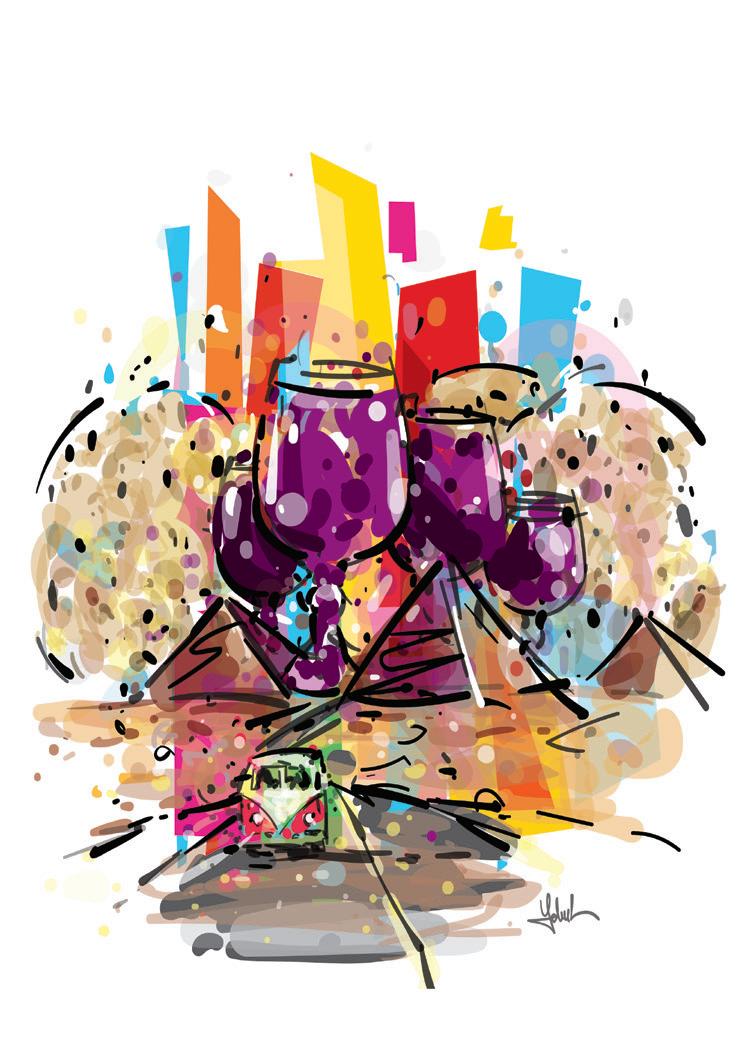
As Jews, our mandate is to break through the finite world around us to reveal the infinite power of G-d hidden within
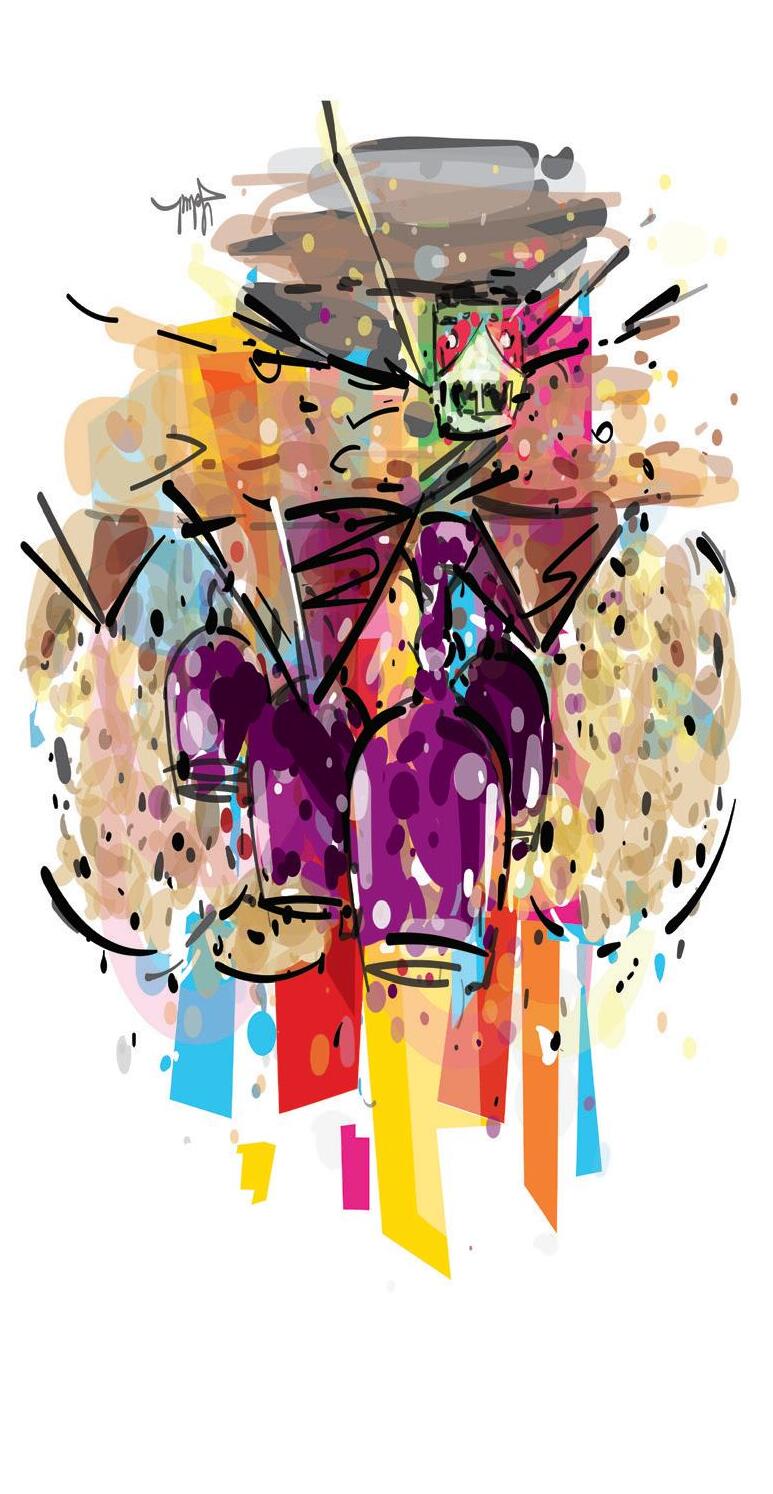
This process of unleashing trapped potential is what it means to be Jewish. As Jews, our mandate is to break through the finite world around us to reveal the infinite power of G-d hidden within. That’s why the “Exodus” is ongoing in every generation daily.
When you see a mezuzah on a doorpost, you’re witnessing this Exodus mandate of the transformation of a house into a Jewish home. Similarly, every glass of wine at the Passover seder demonstrates our ability to induct even grapes into the service of G-d, revealing their true purpose. Nowadays, our objective is not only to escape “Egypt” but to transform it.
The art of Passover starts with knowing that going out of “Egypt” is not limited to geographic locations or raw materials that need redemption. Many of us still need to break free of
anger or debilitating fear. So, in every generation, every day, we must strive to leave Egypt and find true freedom.
Rabbi Judah Loew, the famous Maharal of Prague (15121609), explained that the Exodus was more than a historical event—it transformed our essence. We changed as G-d gifted us the nature of true freedom, making us truly “free people.”
Saving the Jews from oppression or exile is one thing, but granting them the true art of freedom—making them a people eternally immune to oppression and exile—is the
Throughout Jewish history, this “gift” and art of freedom have allowed us to find holiness in an unholy world and to transform all sorts of “Eygypts” into holy sanctuaries.
The Story of Your Freedom
This daily, ongoing redemption is deeply felt during Passover when we relive the original Exodus and awaken our personal and collective power to journey toward our ultimate freedom.
Accordingly, Passover and the art of freedom are central to Jewish identity because it embodies our daily journey and ultimate purpose. The redemption that happened for our ancestors was the start of our continuous journey toward the ultimate redemption.
Passover is not just our holiday; it’s our way of life. •
COMPLIMENTS OF CHABAD LOS ALAMITOS ARTWORK BY YEHUDA LANG
>>Shira Gold is a staff writer at Chabad Magazine. She lives with her husband and her children in Los Angeles.
Artwork by Yehuda Lang. View
Yehuda Lang gallery
COMPLIMENTS OF CHABAD LOS ALAMITOS
ARTWORK BY YEHUDA LANG
Why Do Women Wave Their Hands over the Shabbat Candles?
Question:
When lighting Shabbat candles, why do we wave our hands three times inwards before making the blessing? I saw my mother and grandmother do it, but no one can explain it to me, other than saying we are bringing in the Shabbat energy.
Answer:
Resting takes a lot of work. Many people are great at achieving, but find it hard to stop achieving. They know how to do, but don’t know how to just be. Shabbat is the day of rest, and to do it right, you need to know what resting means.
Resting is not doing nothing. If it was, there would be no reason to feel rejuvenated after a rest. Notdoing may not drain us, but why should it replenish us?
by Aron Moss
energy close, using it only for enhancing our inner lifeour connections with family, friends, community and G-d.
And then there is an even deeper level of rest on Shabbat, the level of thought. When we reach this level, we feel as if our weekday life doesn’t even exist, and we don’t have a worry in the world.

True rest is the ingathering of our soul energy.
After expending our powers outward, we draw our energy back inward. During the workweek we are pulled in all directions, and our frantic activities drain our soul. The creativity and inventiveness that lies within has been exhausted, and so we need to draw our energy back to its source to be replenished and renewed.
Perhaps this is symbolized by the inward-waving motion at candle-lighting. We are beckoning our soul energy to come back to its source. For six days we were outward beings, investing ourselves in the world around us. On Shabbat we pull back, holding our energy in to regain focus and balance.
Our retreat from the externalities of life happens on three levels: action, speech and thought.2 On the level of action, we refrain from doing actual work on Shabbat. But on a deeper level, the level of speech, we refrain from even talking about work-related matters. We don’t make deals, and we don’t plan for the week ahead. We hold our soul

So when you wave your hands three times, have in mind that you are about to enter a realm of inner rest, retreating from the superficial world and all its demands on three levels: You’ll stop working. You won’t talk about work. And you’ll even stop worrying about it.
When all those external layers are gone, what is left? Just you, your soul, and the relationships that really matter.
Editor’s Note: There appears to be no source for the hand-waving in classic rabbinic literature. Rather, it seems to be an outgrowth of an older custom to cover the candles until the blessing is made.
The candles are covered for the following reason: Normally, the blessing is recited before the performance of a mitzvah, but here we light the candle and recite the blessing afterwards. (This is because once the blessing is recited, Shabbat has been ushered in, and lighting the candle would be forbidden.) So we postpone the completion of the mitzvah until after the blessing, by covering the candles as soon as we light them and we then cover our eyes while saying the blessing. Thus our first enjoyment of the Shabbat light – and the fulfillment of the mitzvah – occurs after the blessing.

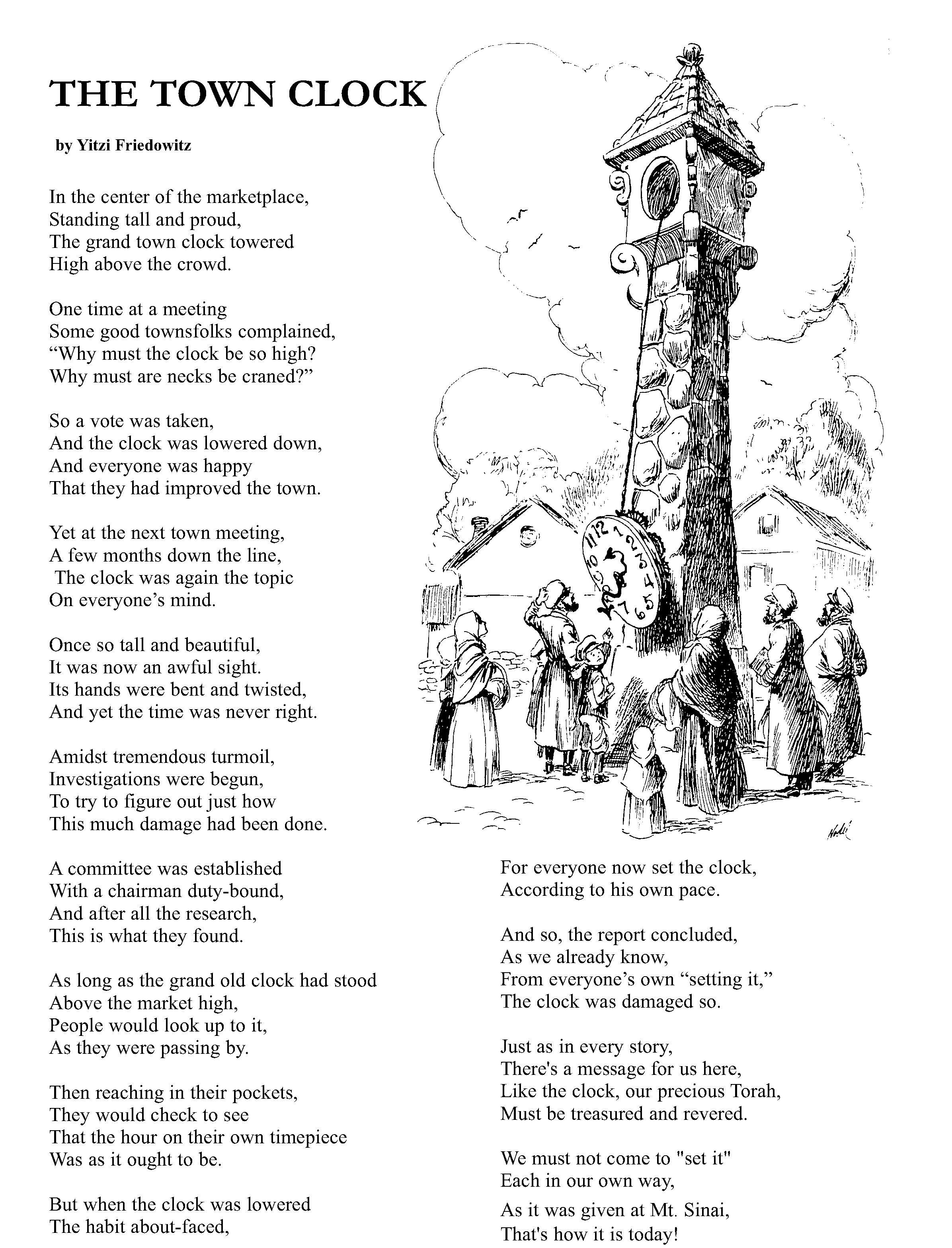

Why Get Married?
by Tzvi Freeman
Is Marriage Good For You?
Marriage has been getting a bad rap lately, and it’s entirely unjustified. Decades of studies on human wellbeing, especially the landmark, 80 year, Harvard Study of Adult Development, provide the same conclusions consistently: By every measure, marriage wins over staying single or living without ceremony with another individual. Married people live longer, stay physically and mentally healthier, are kinder to each other, and are less likely to abuse one another. They experience less physical pain, feel more secure, make more money, retire with more assets, and are more likely to say they are happy with their lives than their cohorts who have stayed out of formal marriage or been divorced. Similarly, the children of marriages are healthier, happier, smarter, safer, and contribute more to the rest of society.
You may find it strange, but living with another individual without the ceremony provides almost none of those advantages. Let me cite one astounding demonstration of this phenomenon, Dr. Jim Coan’s hand-holding study at the University of Virginia.
Dr. Coan’s group was testing whether having someone hold your hand as another someone pricks your toes will reduce hypothalmic response. In other words, does it hurt less? Coan wasn’t looking for evidence of the marriage
bond, but the data screamed it out at him. As he puts it, “Married couples, but not cohabiting couples, had reduced hypothalamic activity in response to threat cues while holding hands with their partners.”
Indeed, we are homo ritualis, creatures molded by ritual.
Is Marriage Risky?
Yes, there are risks. Yes, there is commitment. Yes, there are fights, tears and emotional turmoil. Yes, there are sacrifices.
But there is no difference between these sacrifices and those we make today to get a solid education, find a wellpaying job, make long-term financial investments and prepare to retire in comfort. No difference, other than that the payoff is so much greater.
As for the risks: as with a home or a car, with proper maintenance and precipitous action those can all be greatly reduced.
Yes, that’s hard work. Everything good is hard work. Good, healthy fun is also hard work. That’s what makes it good - because it’s something you achieved through your persevering, don’t-let-go-don’t-ever-let-go hard work.
So what have we done to marriage? What was wrong with it that we so easily threw it away? Why have so many otherwise intelligent people deliberately attacked and torn apart such a precious institution?
Truthfully, I can only see one cause. Society acts as an organism. When it feels it has lost its viability, it triggers its own demise. The decline of marriage is the soulless, impotent non-culture of secularism shutting down its mechanisms of reproduction, atomizing into unconnected individuals, preparing the bed of its own extinction. Without a sense of the transcendental, there is no oxygen left for life to breathe.
As Rabbi Jonathan Sacks put it, “Having children and raising them involves enormous sacrifice . . . religious people understand the concept of sacrifice . . . (but) throughout history, people in a secular, consumerist, individualist culture find it much harder to live by sacrifice.”
To marry is to have faith in life. To believe that there is purpose to humankind, and eternal meaning to your own existence.
Marriage on a Higher Plane
The truth is that marriage is much more than a commitment to life with another person. It is a choice to live life on a higher plane.
Look at the world around you - a plethora of living beings and things, each traveling its own road in its own direction, each fighting for its own survival, seeking its own pleasure and fulfillment, as though the entire universe is about nothing but this small creature.
If you did not know otherwise, you would expect a universal battle between innumerable forces, a cosmic traffic jam, a cacophony that should last less than a moment before all is destroyed in the havoc.
But you know otherwise. You have been there as the sun veers further south each morning, the trees shed their summertime attire, the squirrels obsess over hoarding nuts and seeds - indeed, as the entire world turns about in majestic harmony. And then the autumn winds bring the sleep of winter, winter awakes into the glorious eruption of spring, and the creatures of spring somehow all agree to slide gently into the heat of summer.
All about you the cycle of life plays again and again, the elements of planet Earth miraculously fine-tuned to the orbits of sun and moon, as the organisms that grow, scutter, swim and fly upon this earth dance elegantly to that tune.
What makes this miracle possible? Something most inexplicable. Embedded within a world defined by diversity and change are universal constants, unchanging over time and space. And to their meter, all of life pulsates in harmony.
Now that is astonishing. The eternal breathes within the temporal, the unchanging within constant change, infinity within the finite. How does this work?
It could only be with a power that transcends all such terms and definitions, neither being nor not-being, but the Creator of all that is transient and all that is constant, finite and infinite, of all the above. In this dance of life, heaven and earth join to touch G-d.
The Choice of Marriage
At a marriage celebration, the kabbalists say, an infinite light descends into the world in an explosion of unbounded joy. From that light comes the power to create life without end.
That is why marriage must be sanctified. Because only through that sanctification can this union rise beyond the desires and passions of temporal creatures, to enter into the cosmic eternity.
Marriage at the Center of Being
The mystery of marriage runs yet deeper; it lies on yet a higher plane - not only in the circle, but in the point around which that circle turns, and in the dynamo that turns it.
The marriage of man and woman is a reflection of the cosmic marriage. As a circle is turned by the dynamic of opposite poles engaged in union by a higher force, so the universe is brought into being by its Creator through the union of opposites. And a marriage, too, is sustained by the dynamics of those very same opposites.

That is why marriage is not about finding one who is the same as you, or even one who is just right for you. Even if by some miracle this person were just right for you when you started, at some point the tectonic plates will shift, even so slightly, and the parts will no longer fit.
And who would want such a union of sameness - one that demands that you remain as you are, ever still, so as not to disturb the perfect-fittedness of this other? You are alive. Life is change. Life is forever being “not that” - ever-transcending, escaping that which you were a moment ago.
So our world tells its story at the intersection of two themes, and you choose where you wish to live - as yet another competitive organism fighting to survive, to win in a struggle over many other little lives, to avoid pain and to attain pleasure, to gasp a breath of air and then begin its journey to decay, as another spark that erupts to glow for a fleeting moment, only to darken, to fall and to perish into the dust.
Or to choose to dwell in the wondrousness of eternity, to join with another who is not you and dance within that circle of sun and earth, day and night, love and awe, summer, autumn, winter and spring again. To bring yet more life into this world with the awesome power of the Infinite, as a new little person emerges out of the nothingness to join your circle-dance, and then another, and yet another, and from them others who will beget yet others. You have risen to the eternal, “as the days of the heavens upon the earth.”
Rather, marriage is a union with one who is not you. It is in marriage that you learn to step beyond the cramped boundaries of defined being, to discover your true self that can be neither spoken or known - but only touched, deeply, by the other with whom you unite.
Marriage is the union that lies at the center of all life - the union of energy and matter, time and space, body and soul, heaven and earth, the eternal and the temporal, Creator and the created. It is the generator of life, of being, of existence.
In marriage, man and woman play G-d. Indeed, when we were created, we were created in G-d’s image, as it says, “In the image of G-d, the human being was created” - and what is that image? “Male and female He created them.”
That is the image of G-d upon this earth: A man and a woman, two selves, two others, ever-becoming one. Nothing can be more transcendent.
Get married. Stay married. Become eternal.
How a Rabbi With ALS and His Wife Spent Their 20th Anniversary
by Yitzi Hurwitz
Dina and I just celebrated our 20th anniversary. Unable to do much, we wondered how we would celebrate this milestone. So we went outside, sat under a tree and just enjoyed nature. The sun, leaves, birds, etc. It was wonderful.
I have found that the simplest things in life make the greatest impact. For example, smiling at someone can lift their spirits. An honest compliment can change the way a person sees him/herself. When you learn to find joy in small things, there are always things to be joyous about.
The Torah portion of Mishpatim, which covers a host of interpersonal laws, follows the greatest event in history, the giving of the Ten Commandments at Sinai. Mishpatim ends with more about the Ten Commandments event. Sandwiched between the two are many basic laws.
Why does G-d have it written this way? Why is it that smack-dab in middle of the most sublime spiritual experience, we have the most rudimentary, seemingly unspiritual laws?
We all yearn for a moving, spiritual experience. To be
DANIEL PHILLIPS, D.D.S.
touched, moved and inspired. To rise above the mundane and to soar, to experience a high and touch the Divine.
This sounds nice, but is this what we are all about?
Of course, we are meant to develop a relationship with G-d, but there is something more that He wants of us.
By putting these laws in middle of the most sublime event, G-d is telling us that there is something special about basic laws that are sublime as well.
Could being good, kind, honest and just be spiritual as meditation and prayer? When you think of these laws as rudimentary, they are not so spiritual. However, if you see them as G-d’s will, they take on a whole new meaning.
All of a sudden, the simplest things become meaningful. You are filled with a sense of fulfillment, knowing that you are doing what G-d wants. Inspiration can be found in kindness, honesty, and in the acceptance of the simplest Torah laws. Suddenly spirituality can be found in the most unexpected places. The simplest act can be sublime and holy.
Think of all the small things you can do to make a difference. Find joy in small things. If you do, you will always have something to be happy about.

Rabbi Yitzi Hurwitz - father of seven, husband of Dina, and spiritual leader at Chabad Jewish Center in Temecula, Calif. - has been rendered immobile by ALS (Lou Gehrig’s Disease). Unable to speak or type, he uses his eyes to write heartfelt thoughts on the weekly Torah portion.

The Hallmark
What Is a Mezuzah?
Mezuzah literally means “doorpost,” and it refers to a small parchment scroll upon which the Hebrew words of the Shema are handwritten by a scribe. Mezuzah scrolls are rolled up and affixed to the doorposts of Jewish homes.
Mezuzah In Jewish Tradition
The mezuzah is the hallmark of the Jewish home, demonstrating that it leads to a Jewish household. When a Jewish family affixes a mezuzah on their permanent residence they are forming another link in Jewish history and continuing a tradition that goes back to Biblical times.
What Constitutes a Kosher Mezuzah?
The decorative case containing the mezuzah scroll is just that: a mere container. What’s important is the scroll, upon which the first two sections of the Shema (the “mezuzah prayer”)are handwritten, beginning with the eternal words “Hear O Israel, the L-rd is our G-d, the L-rd is One.”1 These selections both contain G-d’s instruction to affix the mezuzah: “You shall write them on the doorposts of your house and on your gates.”
These words are handwritten by an expert scribe who is trained in the many laws involved in writing a mezuzah, including the requirement that it be written with special intention and that the words be written in order.
Every single letter in the mezuzah must be properly formed. A single crack in the parchment or any omission can invalidate the entire scroll. A printed mezuzah is invalid. For this reason it is vital that it be purchased from a reputable scribe or retailer.
On the reverse side of the scroll, the scribe writes one of G-d’s names: Sha-dai. The three letters of this name form an acronym for the Hebrew words that mean “Guardian of the doorways of Israel.” Since this name of G-d begins with the letter shin, mezuzah cases are often decorated with that letter.
Where Are Mezuzahs Placed?
You should affix a mezuzah on just about every doorway that belongs to you. Notable exceptions are doors leading to bathrooms and small closets.
The mezuzah should be affixed on the right side of the door, on the top third of the doorway. The mezuzah should be right-side up, and slanted so that the top of the mezuzah faces inwards towards the room.
What Is the Meaning of the Mezuzah?
Affixing a mezuzah on our doors fulfills a Biblical command, but it also has a very important message and pro-

vides a unique service to the denizens of our homes.
The mezuzah means that Judaism is not confined to synagogues. We strive for spirituality even within the comfort and familiarity of our own homes. The mezuzah on the doorpost reminds those who walk through that G-dly life and Torah accompany them wherever they go.
Our sages teach that a mezuzah has the unique property of protecting the inhabitants of the home where it is hung - whether the inhabitants are inside or outside that home. The mezuzah can be compared to a “helmet,” a veneer that protects us against the dangers that surround us in our lives.
The Talmud teaches that while most kings sit on the inside while their guards protect them from without, G-d stations His protection (as manifested in the mezuzah) on the outside, protecting His beloved people.
G-d promises that anyone who carefully observes the mitzvah of mezuzah will lead a longer, richer life, as will their descendants, as Deuteronomy states, “So that you will prolong your days and the days of your children.”2
When passing through a doorway where a mezuzah has been affixed, we glance at it and touch it. Some people then kiss their fingertips. This serves as a reminder throughout the day that G-d is always with us, inside or outside our homes.
The Prayer Said Before Affixing a Mezuzah Bah-rookh ah-tah ah-doh-noi eh-loh-hay-noo meh-lekh

hah-oh-lahm ah-sher ki-deh-shah-noo beh-mitz-voh-tahv veh-tzee-vah-noo lik-boh-ah meh-zoo-zah.
Blessed are you, L-rd our G-d, King of the Universe, Who has made us holy with His commandments and command-
Words in a Doorway
by Yanki Tauber
“Hear O Israel, G-d is our G-d, G-d is one” (Deuteronomy 6:4). The words of the Shema constitute the most basic statement of Judaism: that G-d is our G-d — a real presence in our lives; and that G-d is one — the singular, absolute, all-embracing truth of our existence.
What do we do with these words? Many things.
1) Mind: We study them and contemplate them. As the verse enjoins, “Hear O Israel” — the Hebrew word for “hear,” shema, also means “comprehend.”
2) Heart: Study and contemplation give birth to emotion. Hence, “Hear O Israel” brings us to “and you shall love G-d with all your heart, all your soul, and all your might” (ibid., verse 6).
3) Speech: When “these words are upon your heart” the next step is verbalization and communication — “And you shall teach them diligently to your children; and you shall speak of them when you sit in your house, and when you walk by the way; and when you lie down, and when you rise up” (ibid. verse 7). The last words in this verse are the source of the mitzvah to recite the Shema every evening (“when you lie down”) and every morning (“when you rise up”).
ed us to affix a mezuzah.
How to Check the Mezuzah
It is customary to have mezuzahs checked twice every seven years, or even every year, prior to the High Holidays. Even if the mezuzah was purchased from a reputable source and previously found to be perfectly kosher, there is always room for human error, and new cracks and other problems can appear with time. Of course, this checking must be done by an expert scribe.
The Rebbe would often urge people who encountered health challenges or other difficulties to have their mezuzahs (and tefillin) checked to make sure that every scroll was in good shape and properly placed on the doorpost.
If you need help getting a new mezuzah or having your existing ones checked, closest Chabad rabbi will be happy to assist you.
Can We Make Our Own Mezuzah?
Yes and no. The mezuzah scroll, upon which is written the mezuzah prayer, must be made out of specialized materials by a highly competent scribe. However, the mezuzah case is something you can make on your own. Clay, PVC pipes, wood and many other craft materials are good for mezuzah cases. So get creative and have fun. Don’t forget that it’s traditional to put the Hebrew letter shin on the case, often near the top.
4) Body: “And you shall bind them for a sign upon your arm, and they shall be as tefillin between your eyes” (ibid. verse 8). Like a marriage ring one a finger, the tefillin are a physically tangible bond on our bodies embodying the our bond with G-d and our commitment to make G-d’s oneness real in our world.
5) Environment: “And you shall inscribe them on the doorposts of your home, and on your gates” (ibid. verse 9). The last and ultimate phase is the mezuzah: a parchment scroll containing the verse of the Shema and affixed to the doorpost of the Jewish home — defining both the sanctity of environment within and its influence on the environment without.

as told to Yerachmiel Tilles
One day, I arrived back to my dorm room in between classes at UCLA, to find that my mezuzah was missing from the door frame. Though concerned, I had no time to investigate, as I was due at my next class, where we were having a guest speaker from another state, one who often taught classes on various Jewish subjects. After the class I told her my plight, whereupon she told me this story about a student from her hometown.
Recently, this college student had expressed a desire to have mezuzot on her doors. The professor kindly arranged to help her. She went to the student’s apartment, which was located in a large building where most of the residents were not Jewish. The professor helped the student affix kosher mezuzot to each of her doors, including of course her front door, which faced the common hallway of the building.
Some time later the professor again visited the student for a class gathering. But when she approached the apartment, she did not see the mezuzah. Upon entering, she noted that the mezuzah was still up, but that the girl had changed its place. Instead of being on the outside of the door, she had reattached the mezuzah on the inside, so that it was visible only from inside the apartment itself.
In answer to the professor’s private inquiry, the student explained that her Jewish girlfriends had criticized her for putting up the mezuzah in such a public place. They told her that it wasn’t very PC to push a Jewish symbol in the face of everyone who passed by, and that it wasn’t necessary. Why must she attract attention like this, and irritate her nonJewish neighbors?
At this point I began to sputter, thinking that perhaps the professor was trying to justify my mezuzah being gone, but she merely smiled at me and continued her tale.
The student was all in a tizzy. She had learned that one must put mezuzot on the doors, but did it matter on which side they hung? She thought it must be okay to just change the position a few inches.
Although it bothered her that, in this day and age, a Jew could be intimidated into not showing her Jewishness publicly, the professor didn’t answer her directly at the time. Because she didn’t want to appear harsh or judgmental, she decided to wait for an appropriate time to discuss the issue further with the student.
As we were speaking, students for the following class began to pour into the lecture hall. So the professor graciously agreed to continue our talk outside in the campus square.
A short time later - she continued - the student excitedly told her that she had returned the mezuzah to its former place on the outside of the door.
It seems that a package had come for her in the mail, but she wasn’t home at the time it was delivered. The mailman left her a note, explaining that he had left the delivery in an upstairs apartment, since he knew the occupant was a trustworthy person.
Going up the stairs to retrieve her package, she realized that this was the apartment of an elderly man whom she occasionally passed in the hallway. The old man opened the door and, recognizing her, asked her to come in so he could give her the package. After she took it, thanked him for his trouble and was about to leave, the man said to her, “Shalom.”
“Oh, you’re also Jewish,” she said, for she had always thought that he wasn’t. Immediately the old man’s demeanor changed. His eyes clouded over with bitterness and anger. He started mumbling to himself, “Yes, a Jew . . . a curse . . . a plague on my life . . . I am a Jew, an unfortunate Jew . . .” Slowly he became more coherent and told the girl the story of his life.
Like so many others, he had lost his entire family during the Holocaust. His wife and children were suffocated in the Nazi gas chambers. He was the only one to survive. Since then his life had been bleak, a numbing succession of days and years of loneliness and pain. Ever since the war he had tried to avoid anything Jewish, even to the point of not revealing his true identity to others.

The girl stood in the doorway wondering what to say. Nothing seemed appropriate. Suddenly, in a gentler voice, the old man asked, “Why, dear girl, did you remove the mezuzah from your door?”
As if he were talking only to himself, the old man said that when the mezuzah was still hanging on her door, he used to sneak downstairs when the corridor was empty. He would stand in the corner near her door and kiss the mezuzah and weep. He said that his heart would find solace and some of his pain would be lifted away.
And that, explained the student to the professor, was why she returned the mezuzah to its rightful place.
As I had listened to this drama of the mezuzah of another girl from another place unfold, the day had passed into twilight. The professor fell silent as she waited for me to contemplate her story. The night wind began to stir, but I was reluctant to leave her to return to my forlorn room. I couldn’t help but exclaim, “That’s beautiful, no, beyond beautiful; but what about me?”
The Chabad Times - Rochester NY - Nissan 5785
As she waved and turned to walk away, she laughed. You must trust in Divine Providence too.
I pondered that for a moment, and after checking my wallet for my credit card, I decided to take matters into my own hands and go buy a new mezuzah. As I was about to drive off, a student who lives in my dorm approached me. I hardly knew her.
“Did you get my note?” she asked. “I passed by your room this morning and noticed your mezuzah hanging loose, so I decided to keep it safe for you.”

Home Security
by Tzvi Freeman
As every homeowner knows, it’s not those little gadgets with the flashing lights that protect your home. It’s the police station. You just need to make sure those gadgets are connected.
A mezuzah on your doorpost works the same way — only that it’s connected to a Higher Protection Agency. Much higher.
In fact, that’s how every mitzvah works — tefillin, Shabbat candles, Torah study, acts of kindness. Think of them as dedicated connections putting you online with the Infinite Server of All Things.
Mezuzahs, however, have a special quality: They connect directly to the protection function. As the sages of the Talmud taught, put a mezuzah on your door and you’re protected in your house and away. Now that’s something no earthbound service offers.

NMLS #46832
Justin Smith Vice President Senior Branch Manager
585 442 7014 585 461 4939 FAX
Jesmith@mtb.com
Brighton Branch 1627 Monroe Avenue Rochester, NY 14618
Same day delivery available Owned & Operated by Mark Finestone



The Surprising Kabbalah of Sin
by Mendel Kalmenson and Zalman Abraham
The Jewish concept of sin differs radically from the common understanding of this fraught term. The English word sin comes from the Latin word sons, which means guilty or criminal. Whereas the Hebrew word for sin, chet, means something akin to a missed opportunity, like an arrow missing its mark.
Many people believe that sin leaves an indelible blemish on a person’s soul - as if a person’s actions can affect their essential state of being. Inevitably, this approach to the consequences of immoral behavior will induce not only feelings of guilt for the action itself but feelings of shame as well, which conflate the sinner with their sin.
According to Jewish thought, sin doesn’t mean that one’s soul has become tainted or corroded, it rather means one acted in conflict with their essence, which is eternally pure and incorruptible. The Talmud teaches that to sin is to be overcome by a moment of temporary insanity, as the Sage Reish Lakish says: “A person doesn’t commit a transgression unless a spirit of madness enters them.”

‘Is it written, “let sinners cease?” Moreover, look to the end of the verse, and the wicked will be no more… [implying that] transgressions will cease [not the sinners], and [as a result] the wicked will be no more. Instead, pray that they should repent.’ Indeed, he prayed for them, and they repented.”
If wickedness was an essential aspect of our inner being, it would make sense to pray for the eradication of the wicked themselves, but Judaism doesn’t see humanity that way. All people have a Divine spark at their core that is indestructible. True, people are also capable of doing bad things, but once they stop engaging in those negative behaviors, their essential goodness can radiate once more. From this perspective, sinful behavior merely covers up one’s inner Divine light; it does not extinguish or even alter it. In other words, a sin is what one does, not who one is.
A transgression blocks out the spiritual voice of reason and logic emanating from our G-dly soul. It harnesses our faculties in pursuit of a deed or experience that does not reflect our true essence and well-being. Sin is, therefore, a foolish investment in an empty and worthless behavior; it does not, however, ultimately define us. For the innermost core of our soul is always pure and holy; it is just a matter of whether we respect and reflect that innate state of being, or whether we devalue and desecrate it.
We find this idea expressed poignantly in the following story in the Talmud: “There was a group of hooligans in R. Meir’s neighborhood who caused him a great deal of pain. R. Meir prayed that they should die. R. Meir’s wife, Berurya, said to him, ‘What is your thinking?’ He replied, ‘It is written: Let sins cease from the land.’ Said Berurya,
This is not to say that Judaism does not hold individuals responsible for the choices they make; it does. As G-d tells Cain : Sin crouches at your door and desires that you let it in, but you can control yourself. According to Judaism, it is our responsibility to guard ourselves from the “spirit of folly” that constantly lurks, waiting for us to drop our defenses, so it can infiltrate our lives and wreak havoc. We alone are responsible for the influences we allow to enter our psyches and senses.

In Judaism, a sin is understood as a moment of temporary “insanity” rather than a permanent stain on our soul, which always remains irrevocably good and G-dly.
Rather than using the feelings of guilt and shame that often follow one’s regrettable actions as motivators for behavioral change after the fact, Judaism encourages us to invest our efforts in proactive and preventative measures to ward off sins before they happen.
In fact, according to Chasidic teaching, the negative feelings one entertains following a transgression can themselves be considered a sin of sorts, a kind of emotional indulgence that only serves to bring one down even further. Such feelings can
The Chabad Times - Rochester NY - Nissan 5785 be a ploy of the negative inclination to make us feel even worse about our previous behavior in order to plunge us even deeper into the quagmire of depression, despair, and lethargy.
But what is the appropriate response for one who has “missed their mark” according to Judaism?
Ultimately, everything that transpires in our lives, even sin, has a purpose and is a necessary part of our life’s journey. Indeed, once a person has already sinned, they now have an opportunity to attain greater spiritual sensitivity and growth than they could have achieved without it.
For this reason, the Sages teach: A baal teshuvah or penitent is considered to be of even greater spiritual standing than a tzaddik - a saintly individual who has never known sin. This is because, having experienced the intense feeling of distance from G-d brought on by sin, the penitent experiences a uniquely intense yearning and thirst for closeness to G-d, triggered by their prior feelings of separation and disconnection.
The tzaddik, however, can never experience such fervor, because he has never strayed from the path of G-d and does not know the pain and suffering caused by sin and the consequential burning desire for connection.
In sum: Sin is not an expression of a corrupted nature, nor does it fundamentally mar one’s essence. The soul is eternally pure and good, and nothing can ever change that spiritual reality. Sin is simply what happens when a person is distracted from their soul-mission and veers off course. But, with effort and support, we can always redirect our energies, realign our priorities, and reclaim our essential goodness. It would surely be a sin to not make the most out of such an opportunity.
a b a b a b a
Noted psychologist Rabbi Dr. Abraham Twersky shared a valuable lesson from his childhood:
“One of the few memories I have of being disciplined by my father for something of which he disapproved was his telling me in a quiet, firm, and no-nonsense tone three Yiddish words, ‘Es past nisht,’ which means ‘this does not become you.’ The message was clear. I knew what I was not to do, but it was not until many years later that I appreciated the full content of my father’s rebuke. He had told me that I was not to do something - not because it was bad, but because I was good – therefore, that particular behavior was beneath me. ‘Es past nisht’ meant simply that I was too good for that. This is the diametric opposite of a put down. I was told I was a person of excellence. Essentially, my father was telling me: This behavior is incompatible and out of character for someone like you.”
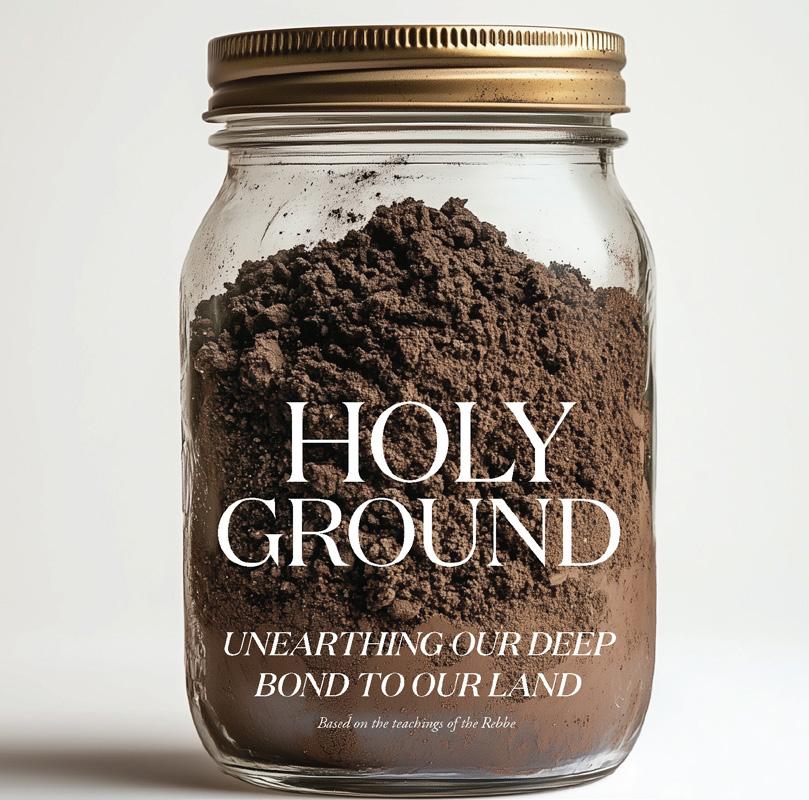
There’s regular dirt, and then there’s soil rich with holiness and purpose. In G-d’s creation, He included a small divine patch of earth with holy dust you could scoop up and hold in your hand. This patch of earth is called the land of Israel.
From the dawn of our history, G-d promised the Land of Israel to Abraham and his descendants - an unbreakable covenant to the Jewish people forever. Our sacred inheritance, this holy land, is intertwined and linked to our Jewish mission, purpose, and destiny.
The Torah describes Israel as “a land the eyes of G-d are always upon it, from the beginning of the year to the end of the year.”
More than just a place, Israel’s constant divine attention makes it a living miracle and model for what the world could be. G-d imbues the land of Israel with holiness and Heavenly love, demonstrating the ultimate mission and goal of the entire creation: to infuse holiness into a mundane world and bring Heaven down to earth.
Almost three thousand years ago, King David wrote about this unique divinity-infused dirt and how Jews would kiss the ground and soil of Israel, saying, “Your servants hold her stones dear and cherish her dust.”
Similarly, according to Maimonides, it was common for the Sages to treat the land of Israel like holy objects, and in the same way they kissed their Torah scrolls; they also kissed the stones and joyously rolled in the sacred dust of Israel.
Today, its ancient cobblestone and rolling hills, imbued with divinity by G-d, empower us to do the same and bring holiness to the ordinary streets and pavements of the entire world. That’s the Jewish mission to unearth and reveal that the same G-d who reigns in Heaven is here on earth, within every aspect of human life.
Your relationship with Israel is essential as it gives you the power to fulfill your purpose and transform the dirt and pebbles around you into holy ground - wherever you are.
HEROINES OF OUR HISTORY

MBy Rabbi Yosef B. Marcus
any have waxed poetic about the unlikely survival of the Jewish people, and as many theories have been proposed to solve the mystery. Yet perhaps the answer has been hiding in plain sight: the Eishet Chayil, the Jewish woman.
At every critical juncture of our long and challenging history, you will find the fearless and wise Eishet Chayil , shepherding us toward our destiny.
Not only are Jewish women at the center of the overarching events of Jewish history—from the Exodus to Sinai, from Jerusalem to Exile and Back—but the influence of particular women is evident at nearly all the turning points and key events.
The overriding trait among these heroines of our history, is their fighting spirit, their willingness to swim against the tide. They are wise, elegant, kind, and pious—but above all, laser-focused and dauntless.
What motivates the Eishet Chayil? What is the source of her superhuman strength? And what is she fighting for?
The power of the Eishet Chayil is

Passover 5785 / 2025
not the pseudo-strength of ego or selfpromotion. Hers is an authentic and, therefore, enduring inner might, borne of absolute identification with her divine mission and her Creator.
The Eishet Chayil says and does what is right, even if unpopular, often at the risk of her life. Naamah, the wife of Noah, bucks the trend of corruption and hedonism that engulfed the society of her day. A young Rebecca boldly tells her family that she will be leaving to build a family with Isaac. Yocheved and Miriam defy the all-powerful Pharaoh, when they refuse his demand to kill the Jewish newborn males. Batya makes the entire Jewish story possible when she defies her father's decree and saves the
to become a Jew. Finally, Esther stands up to both King Achashverosh and the mighty Haman to prevent a decree of annihilation.
While human nature prods us towards the path of least resistance, to going along with the flow, the women of valor stand up to tyrants and shun the prevailing mores of their times.
GUARDIANS OF THE JEWISH FUTURE
Much of the Eishet Chayil's vigor and tenacity is directed towards the mitzvah of bearing and educating children, both her own and those of others. Yocheved and Miriam, the Jewish midwives in Egypt, personify this quality most strikingly.
THE OVERRIDING TRAIT AMONG THESE HEROINES OF OUR HISTORY, IS THEIR FIGHTING SPIRIT, THEIR WILLINGNESS TO SWIM AGAINST THE TIDE
life of one of those newborns, Moses. Yael risks her life to eliminate Sisera, the mortal enemy of Israel. Naomi, the former aristocrat now penniless and barefoot, risks the humiliation of returning to her hometown and destiny, instead of slipping away into anonymity.
Rachav risks her life when she defies the king's orders to hand over the Jewish spies. Batsheva rebukes her son, King Solomon, setting him on the path of wisdom and enabling the inauguration of the First Temple to commence. Serach, with sharp words, stands up to David's powerful general, Joab, and saves a town from the destruction of civil war. The wife of Ovadiah, along with her husband, defies the ruthless Ahab and Jezebel. Ruth gives up her own royal Moabite family to follow Naomi back to her land and
They are more than midwives, ushering newborns into the world—they care for these children, especially those from poorer families, and educate them as they grow older. Miriam admonishes her father for failing to procreate, which leads to the birth of Moses. Eight decades later, Miriam will question Moses about his decision to cease having children.
The Eishet Chayil is dedicated to protecting children and raising them as servants of G-d. Sarah protects Isaac from Ishmael. Rebecca separates Jacob and Esau so that they both live. The widow of Ovadiah rejects an easy life for herself and her children and instead turns over Heaven and earth to ensure that they do not fall prey to the negative influence of a pagan palace.
Chana, mother of Samuel, pierces the
heavens with her prayers for a child and then dedicates that long-awaited child to G-d, bringing him to Shiloh to serve in the Tabernacle. While still at home with Samuel in his early years, Chana sits out the family's pilgrimages to the Tabernacle to stay home with her child. As a prophetess, she appreciates the lofty environment of Shiloh more than others. Yet she stays behind. She recognizes that despite the spiritual achievements she would attain for herself at Shiloh, there was something even greater: caring for and raising a child. Anything else, as enticing or dazzling as it might be, was only a distraction from the ultimate divine mission to create and nurture life.
The heroines of our history were prophetesses and leaders, but they were first and foremost the architects and guardians of the Jewish future, fiercely dedicated to bringing children into the world who would carry on the legacy of Abraham and Sarah.
But whatever role they played, in family life or in the community, the common denominator was this: an ironclad faith and fearlessness and an absolute dedication to life's ultimate purpose, to partner with G-d in making the world a divine garden.
From the times of Abraham and Sarah to our time, the engine of history is powered by a formidable force: the Jewish woman of valor, the Eishet Chayil.
Through her inspiration and impact, the world will reach its intended destiny, the time when knowledge of G-d will fill the world, like the waters cover the sea. •
Excerpt from an upcoming book titled Eishet Chayil, Heroines of Our History, published by Kehot Publication Society, set to be released in the fall of 2025. For more information, visit www.kehot.com.
>>Rabbi Yosef Marcus and his Eishet Chayil, Rebbetzin Esty Marcus, are the founders of Chabad NP in Silicon Valley. He is the author of several popular books, including commentaries on the Haggadah, Ethics of the Fathers, Psalms, and the Scroll of Esther.
Passover 5785 / 2025
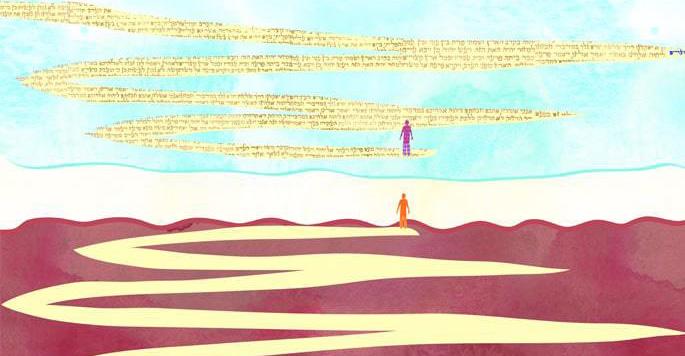
Do Jews Believe in an Afterlife?
by Shlomo Yaffe and Yanki Tauber
The Soul and Heaven in Judaism
One of the fundamental beliefs of Judaism is that life does not begin with birth, nor does it end with death. This is articulated in the verse in Kohelet (Ecclesiastes), “And the dust returns to the earth as it was, and the spirit returns to G-d, who gave it.”
The Rebbe would often point out that a basic law of physics (known as the First Law of Thermodynamics) is that no energy is ever “lost” or destroyed; it only assumes another form. If such is the case with physical energy, how much more so a spiritual entity such as the soul, whose existence is not limited by time, space, or any of the other delineators of the physical state. Certainly, the spiritual energy that in the human being is the source of sight and hearing, emotion and intellect, will and consciousness does not cease to exist merely because the physical body has ceased to function; rather, it passes from one form of existence (physical life as expressed and acted via the body) to a higher, exclusively spiritual form of existence.
While there are numerous stations in a soul’s journey, these can generally be grouped into four general phases:
1. The wholly spiritual existence of the soul before it enters the body;
2. Physical life;
3. Post-physical life in Gan Eden (the “Garden of Eden,” also called “Heaven” and “Paradise”);
4. The “world to come” (olam haba) that follows the
resurrection of the dead.
What are these four phases, and why are all four necessary?
To See or Not to See: The Free Choice Paradox
As discussed at length in chassidic teaching,2 the ultimate purpose of the soul is fulfilled during the time it spends in this physical world making this world “a dwelling-place for G-d” by finding and expressing G-dliness in everyday life through its fulfillment of the mitzvot.
But for our actions in this world to have true significance, they must be the product of our free choice. If we were to experience the power and beauty of the divine presence we bring into the world with our mitzvot, we would always choose what is right, and thereby lose our autonomy. The obvious becomes robotic. Our accomplishments would not be ours, any more than it is an “accomplishment” that we eat three meals a day and avoid jumping into fire.
Hence, this crucial stage of our lives is enacted under the conditions of almost total spiritual blackout: in a world in which the divine reality is hidden, in which our purpose in life is not obvious; a world in which “all its affairs are severe and evil, and wicked men prevail.” In such a world, our positive and G-dly actions are truly our own choice and achievement.
On the other hand, however, how would it be possible at all to discover, and act upon, goodness and truth under such conditions? If the soul is plunged into such a G-dless world, and cut off from all knowledge of the divine, by
The Chabad Times - Rochester NY - Nissan 5785 what means could it ever discover the path of truth?
This is why the soul exists in a purely spiritual state before it descends in to this world. In its pre-physical existence, the soul is fortified with the divine wisdom, knowledge and vision that will empower it in its struggles to transcend and transform the physical reality.
In the words of the Talmud: “The fetus in its mother’s womb is taught the entire Torah . . . When its time comes to emerge into the atmosphere of the world, an angel comes and slaps it on its mouth, making it forget everything.”
An obvious question: If we’re made to forget it all, why teach it to us in the first place? But herein lies the entire paradox of knowledge and choice: we can’t see the truth, we can’t even manifestly know it, but at the same time we do know it, deep inside us. Deep enough that we can choose to ignore it, but also deep enough that wherever we are and whatever we become, we can always choose to unearth it. This, in the final analysis, is choice: our choice to pursue the knowledge implanted in our soul, or to suppress it.
The Mutual Exclusivity of Achievement and Reward
Thus the stage is set for phase 2: the tests, trials and tribulations of physical life. The characteristics of the physical - its finiteness, its opaqueness, its self-centeredness, its tendency to conceal what lies behind it - form a heavy veil that obscures virtually all knowledge and memory of our divine source. And yet, deep down we know right from wrong. Somehow we know that life is meaningful, that we are here to fulfill a divine purpose; somehow, when confronted with a choice between a G-dly action and an unG-dly one, we know the difference. The knowledge is faint - a dim, subconscious memory from a prior, spiritual
state. We can silence it, or amplify it - the choice is ours.
Everything physical is, by definition, finite; indeed, that is what makes it a concealment of the infinitude of the divine. Intrinsic to physical life is that it is finite in time: it ends. Once it ends - once our soul is freed from its physical embodiment - we can no longer achieve and accomplish. But now, finally, we can behold and derive satisfaction from what we have accomplished.
The two are mutually exclusive: achievement precludes satisfaction; satisfaction precludes achievement. Achievement can take place only in the spiritual blindness of the physical world; satisfaction can take place only in the choice-less environment of the spiritual reality.
The Talmud quotes the verse: “You shall keep the mitzvah, the decrees and the laws which I command you today to do them.” “Today to do them,” explains the Talmud, “but not to do them tomorrow. Today to do them, and tomorrow to receive their reward.” Pirkei Avot expresses it thus: “A single moment of repentance and good deeds in this world is greater than all of the world to come. And a single moment of bliss in the world to come is greater than all of this world.”
It’s as if we spent a hundred years watching an orchestra performing a symphony on television - with the sound turned off. We watched the hand movements of the conductor and the musicians. Sometimes we asked: why are the people on the screen making all these strange motions to no purpose? Sometimes we understood that a great piece of music was being played, but didn’t hear a single note. After a hundred years of watching in silence, we watch it again - this time with the sound turned on.
The orchestra is ourselves, and the music - played well or poorly - is the deeds of our lives.
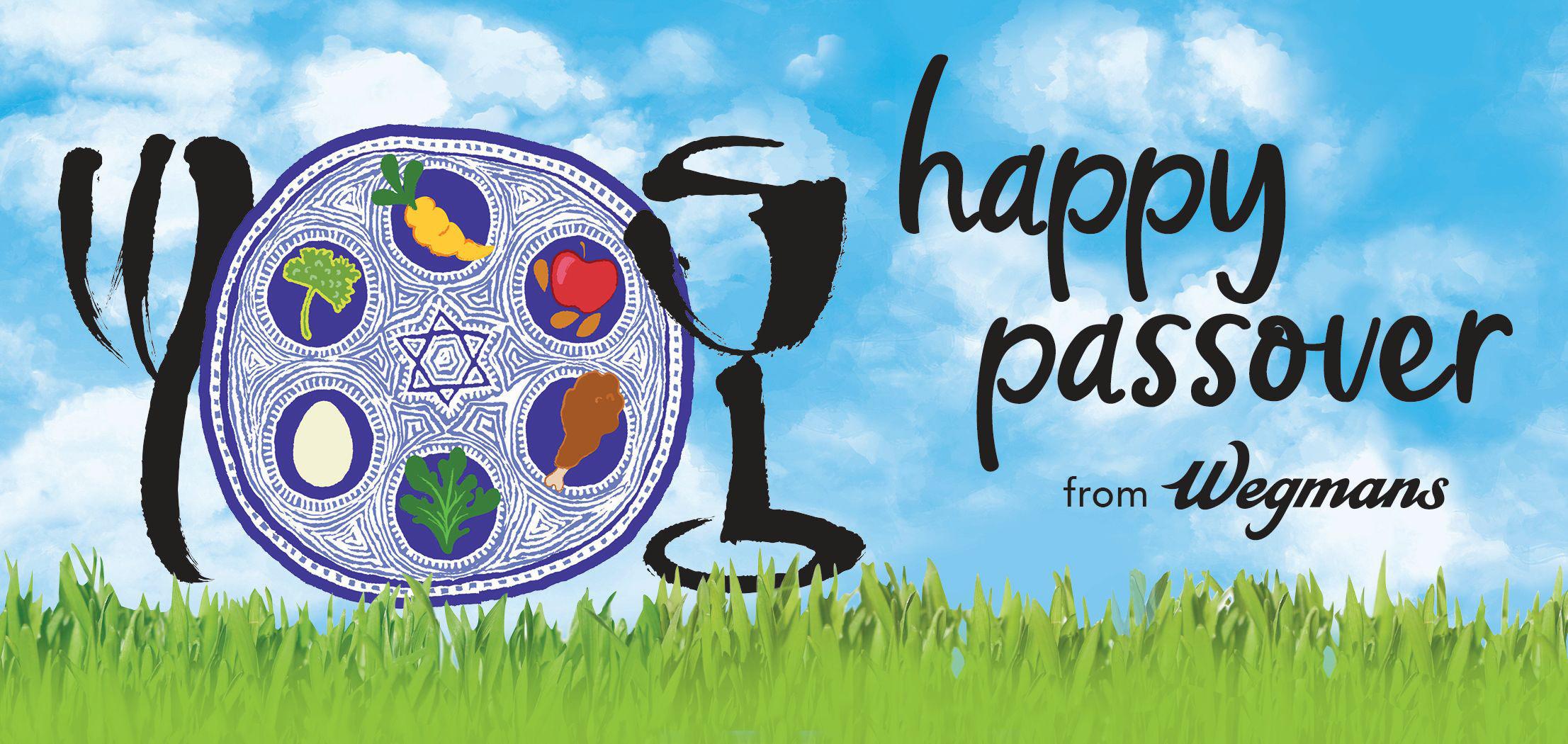
Heaven and hell are where the soul receives its reward and punishment after death. Yes, Judaism believes in, and Jewish traditional sources extensively discuss, punishment and reward in the afterlife (indeed, it is one of the “Thirteen Principles” of Judaism enumerated by Maimonides). But these are a very different “heaven” and “hell” than what one finds described in medieval Christian texts or New Yorker cartoons. Heaven is not a place of halos and harps, nor is hell populated by those red creatures with pitchforks depicted on the label of non-kosher canned meat.
After death, the soul returns to its divine Source, together with all the G-dliness it has “extracted” from the physical world by using it for meaningful purposes. The soul now relives its experiences on another plane, and experiences the good it accomplished during its physical lifetime as incredible happiness and pleasure, and the negative as incredibly painful.
engendered, and “bask in the divine radiance” emitted by the G-dliness it brought into the world.
For a G-dly soul spawns far more good in its lifetime than evil. The core of the soul is unadulterated goodness; the good we accomplish is infinite, the evil but shallow and superficial. So even the most wicked of souls, say our sages, experiences at most twelve months of Gehinnom, followed by an eternity of heaven. Furthermore, a soul’s experience of Gehinnom can be mitigated by the action of his or her children and loved ones, here on earth. Reciting kaddish and engaging in other good deeds “in merit of” and “for the elevation of” the departed soul means that the soul, in effect, is continuing to act positively upon the physical world, thereby adding to the goodness of its physical lifetime.
For a G-dly soul spawns far more good in its lifetime than evil.
The core of the soul is unadulterated goodness; the good we accomplish is infinite, the negative but shallow and superficial.
This pleasure and pain are not reward and punishment in the conventional sense - in the sense that we might punish a criminal by sending him to jail, or reward a dedicated employee with a raise. It is rather that we experience our own life in its reality - a reality from which we were sheltered during our physical lifetimes. We experience the true import and effect of our actions. Turning up the volume on that TV set with that symphony orchestra can be intensely pleasurable, or intensely painful - depending on how we played the music of our lives.
When the soul departs from the body, it stands before the heavenly court to give a “judgment and accounting” of its earthly life. But the heavenly court does only the “accounting” part; the “judgment” part - that, only the soul itself can do. Only the soul can pass judgment on itself; only it can know and sense the true extent of what it accomplished, or neglected to accomplish, in the course of its physical life. Freed from the limitations and concealments of the physical state, it can now see G-dliness; it can now look back at its own life and experience what it truly was. The soul’s experience of the G-dliness it brought into the world with its mitzvot and positive actions is the exquisite pleasure of Gan Eden (the “Garden of Eden” - Paradise); its experience of the destructiveness it wrought through its lapses and transgressions is the excruciating pain of Gehinnom (“Gehenna” or “Purgatory”).
The truth hurts. The truth also cleanses and heals. The spiritual pain of Gehinnom - the soul’s pain in facing the truth of its life - cleanses and heals the soul of the spiritual stains and blemishes that its failings and misdeeds have attached to it. Freed of this husk of negativity, the soul is now able to fully enjoy the immeasurable good that its life
The soul, for its part, remains involved in the lives of those it leaves behind when it departs physical life. The soul of a parent continues to watch over the lives of his or her children and grandchildren, to derive pride (or pain) from their deeds and accomplishments, and to intercede on their behalf before the heavenly throne; the same applies to those to whom a soul was connected with bonds of love, friendship and community. In fact, because the soul is no longer constricted by the limitations of the physical state, its relationship with its loved ones is, in many ways, even deeper and more meaningful than before.
However, while the departed soul is aware and cognizant of all that transpires in the lives of its loved ones, the souls remaining in the physical world are limited to what they can perceive via the five senses as facilitated by their physical bodies. We can impact the soul of a departed loved one through our positive actions, but we cannot communicate with it through the conventional means (speech, sight, physical contact, etc.) that, prior to its passing, defined the way that we related to each other. (Indeed, the Torah expressly forbids the idolatrous practices of necromancy, mediumism and similar attempts to “make contact” with the world of the dead.) Hence, the occurrence of death, while signifying an elevation for the soul of the departed, is experienced as a tragic loss for those it leaves behind.
Reincarnation: A Second Go
Each individual soul is dispatched to the physical world with its own individualized mission to accomplish. As Jews, we all have the same Torah with the same 613 mitzvot; but each of us has his or her own set of challenges, distinct talents and capabilities, and particular mitzvot which form the crux of his or her mission in life.
At times, a soul may not conclude its mission in a single
The Chabad Times - Rochester NY - Nissan 5785 lifetime. In such cases, it returns to earth for a “second go” to complete the job. This is the concept of gilgul neshamot - commonly referred to as “reincarnation” - extensively discussed in the teachings of Kabbalah. This is why we often find ourselves powerfully drawn to a particular mitzvah or cause and make it the focus of our lives, dedicating to it a seemingly disproportionate part of our time and energy: it is our soul gravitating to the “missing pieces” of its divinely ordained purpose.
The World to Come
Just as the individual soul passes through three stages - preparation for its mission, the mission itself, and the subsequent phase of satisfaction and reward - so, too, does creation as a whole. A chain of spiritual “worlds” precedes the physical reality, to serve it as a source of divine vitality and empowerment. Then comes the era of olam hazeh (“this world”), in which the divine purpose of creation is played out. Finally, once humanity as a whole has completed its mission of making the physical world a “dwelling-place for G-d,” comes the era of universal reward - the “world to come” (olam haba).
There is a major difference between a soul’s individual “world of reward” in Gan Eden, and the universal reward of the world to come. Gan Eden is a spiritual world, inhabited by souls without physical bodies; the world to come is a physical world, inhabited by souls with physical bodies (though the very nature of the physical will undergo a fundamental transformation).
In the world to come, the physical reality will so perfectly “house” and reflect the divine reality that it will transcend the finitude and temporality which define it today. Thus, while in today’s imperfect world the soul can experience “reward” only after it departs from the body and physical life, in the world to come the soul and body will be reunited and will together enjoy the fruits of their labor. Thus, the prophets of Israel spoke of a time when all who died will be restored to life: their bodies will be regenerated and their souls restored to their bodies. “Death will be eradicated forever,” and “the world will be filled with the knowledge of G-d as the water covers the seabed.”
This, of course, will spell the end of the “Era of Achievement.” The veil of physicality, rarefied to complete transparency, will no longer conceal the truth of G-d, but will rather express it and reveal it in an even more profound way than the most lofty spiritual reality. Goodness and G-dliness will cease to be something we do and achieve, for it will be what we are. Our experience of goodness will be absolute. Body and soul both, reunited as they were before they were separated by death, will inhabit all the good that we accomplished with our freely chosen actions in the challenges and concealments of physical life.

Rochester, NY 14623
Phone 427-7300





